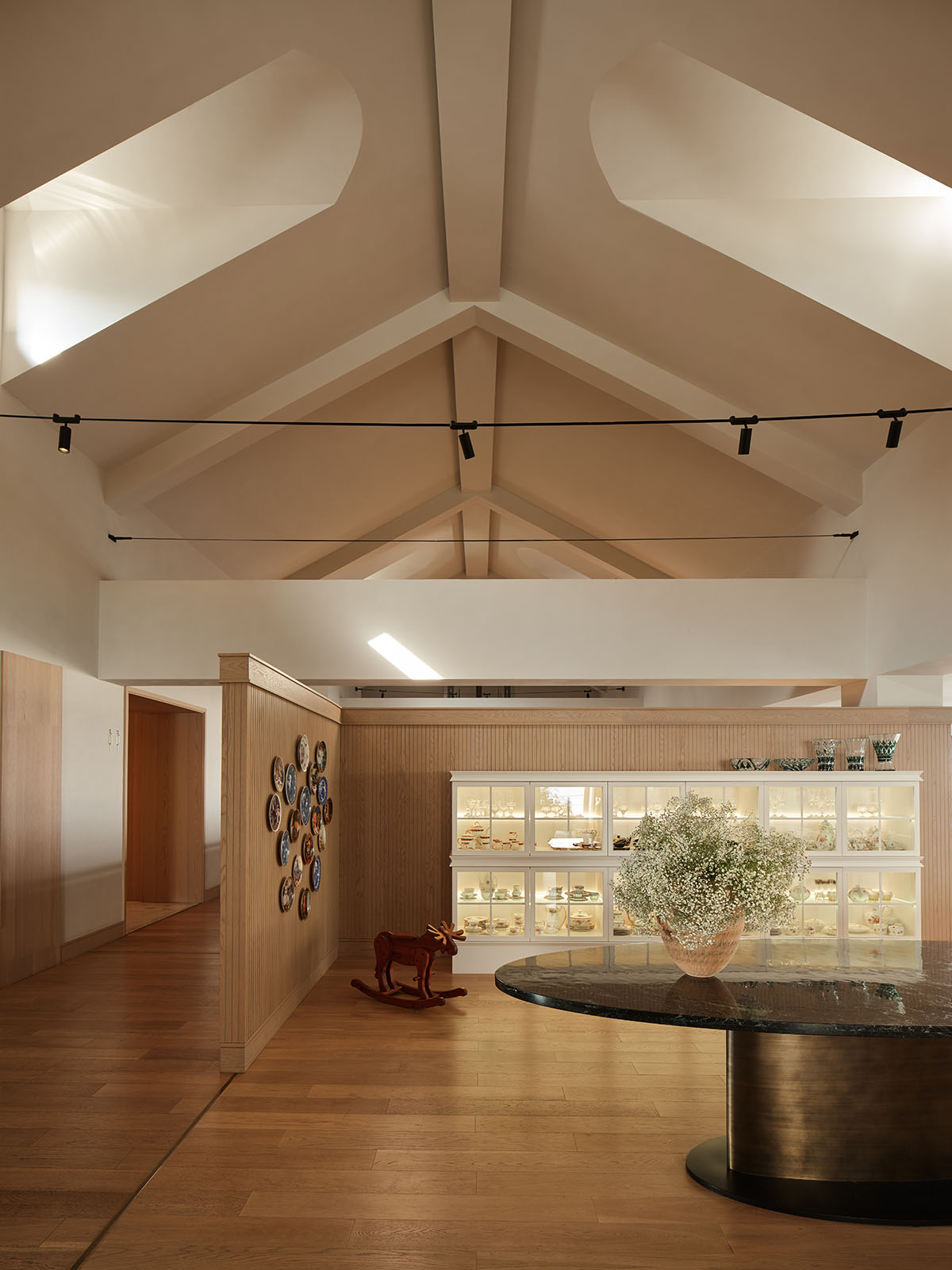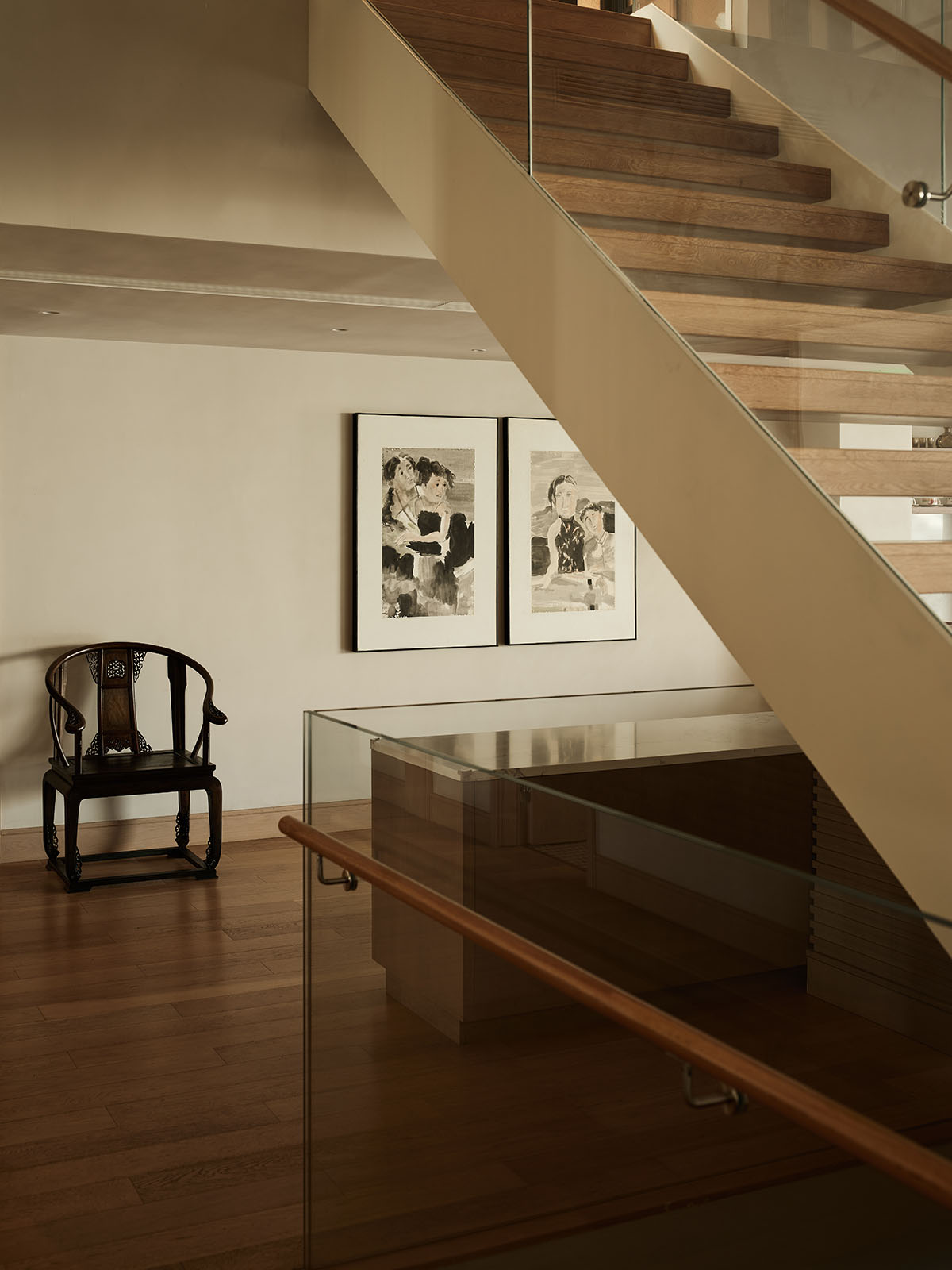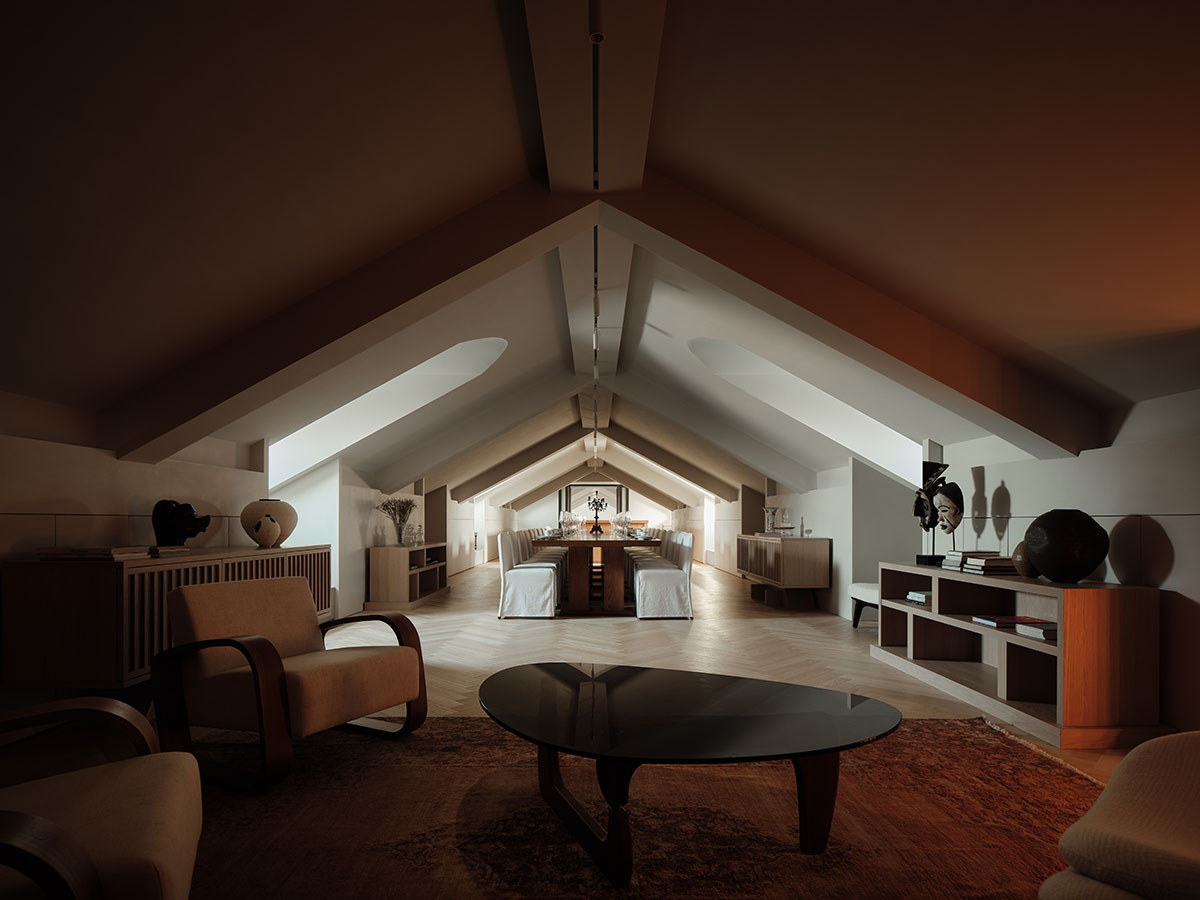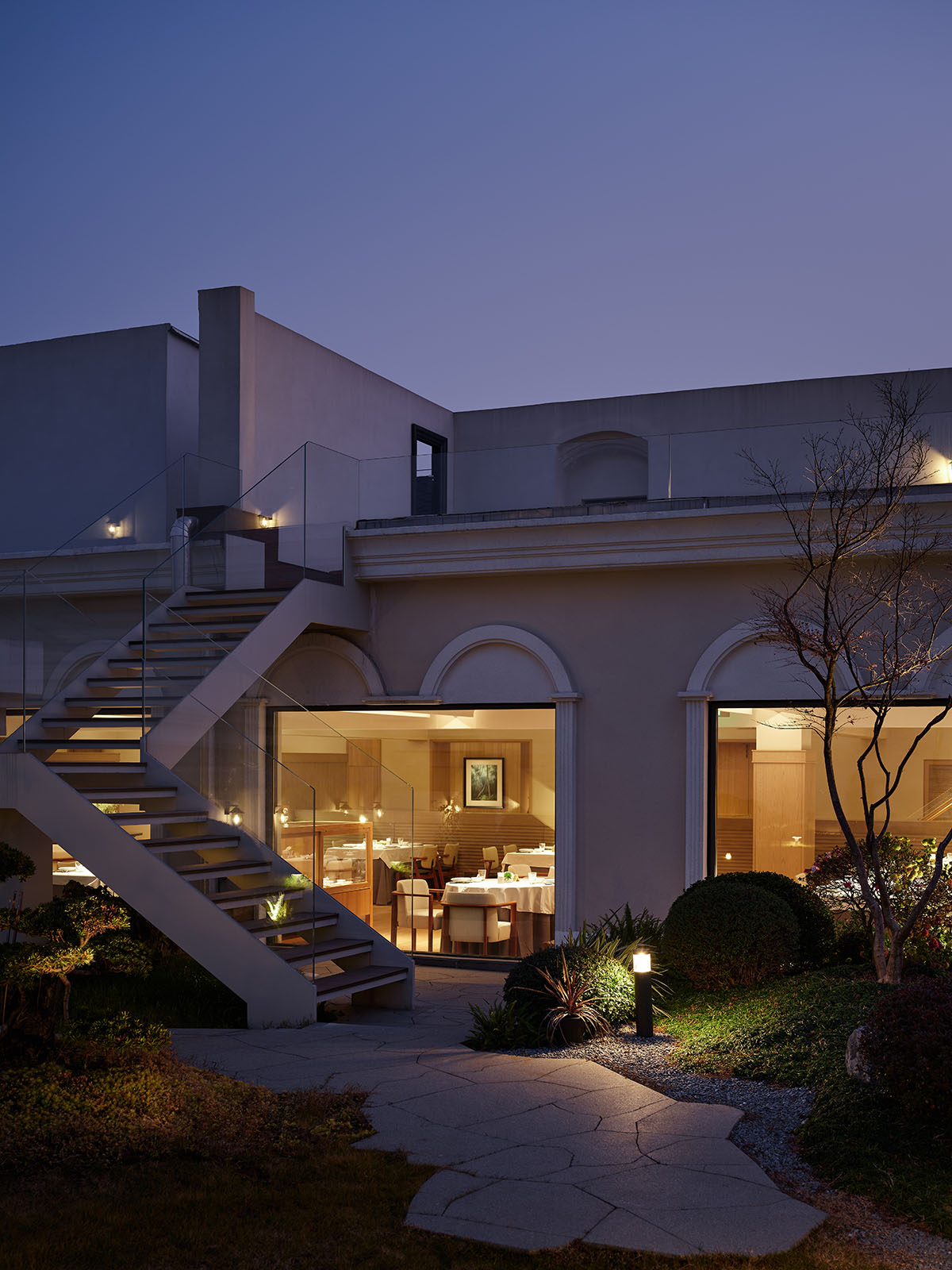Jiu Yue Fine Dining
Approximately an hour’s drive from Ningbo brings you to Cixi, where Jiu Yue, a haven for refined Cantonese cuisine, is located in the heart of the city. This restaurant, reborn from an older structure thanks to the designer’s vision, is more than just a place to eat; it’s a curated cultural restaurant. In an era of relentless competition, where traditional restaurants prioritize rapid turnover, Jiu Yue consciously encourages guests to linger. The designer transcends the conventional definition of a restaurant, creating a space that, beyond offering delicious food, transports patrons to a longed-for 'home' dining experience. Here, guests can savor moments of serene presence, distancing themselves from the anxieties of modern life.
Photo: PuYan
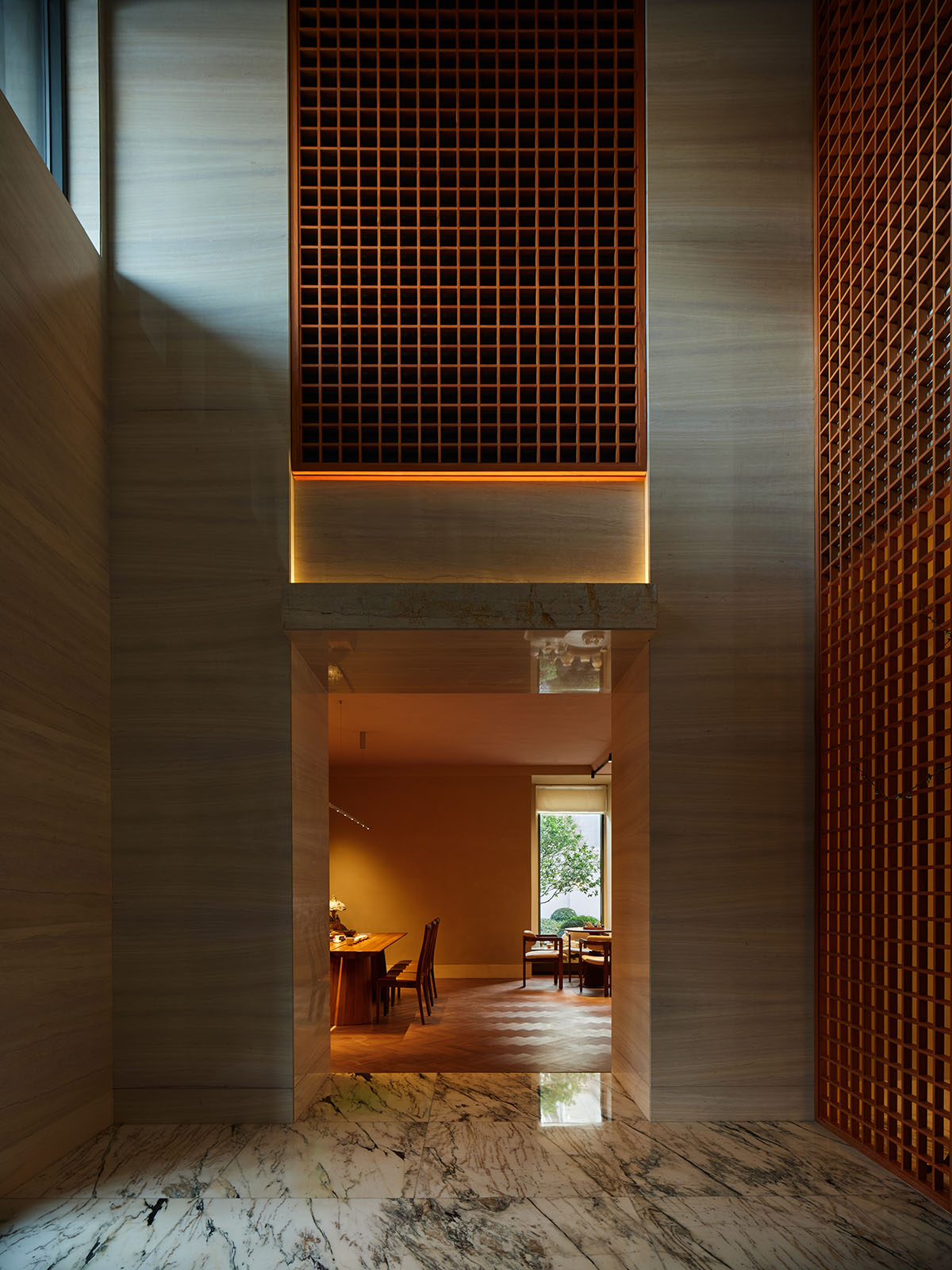
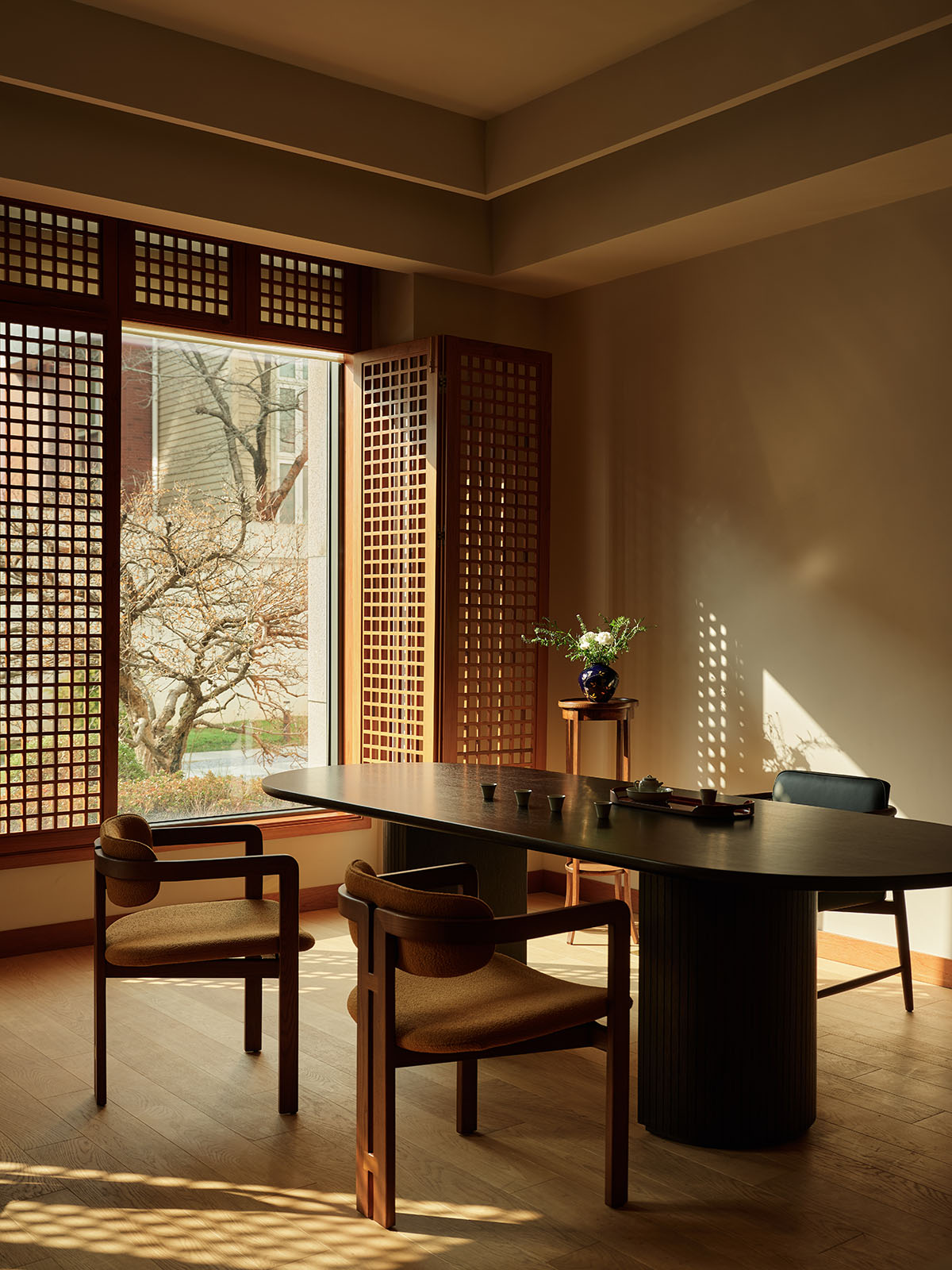

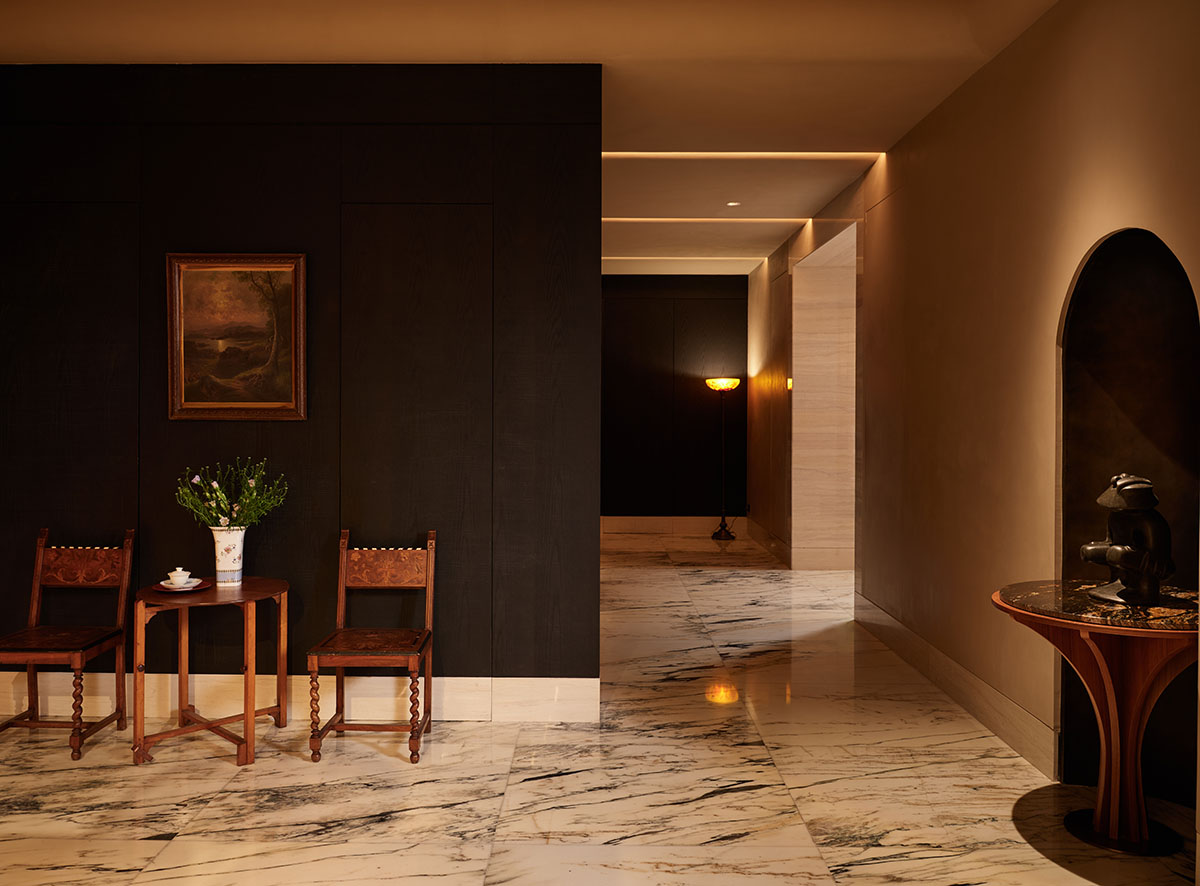
Occupying all seven floors of a commercial building constructed over two decades ago, the restaurant spans over 7,000m². The project unfolds in two phases: phase one (floors one, four, six, seven, and the attic) is complete and open; phase two (floors two, three, and five) is ongoing.

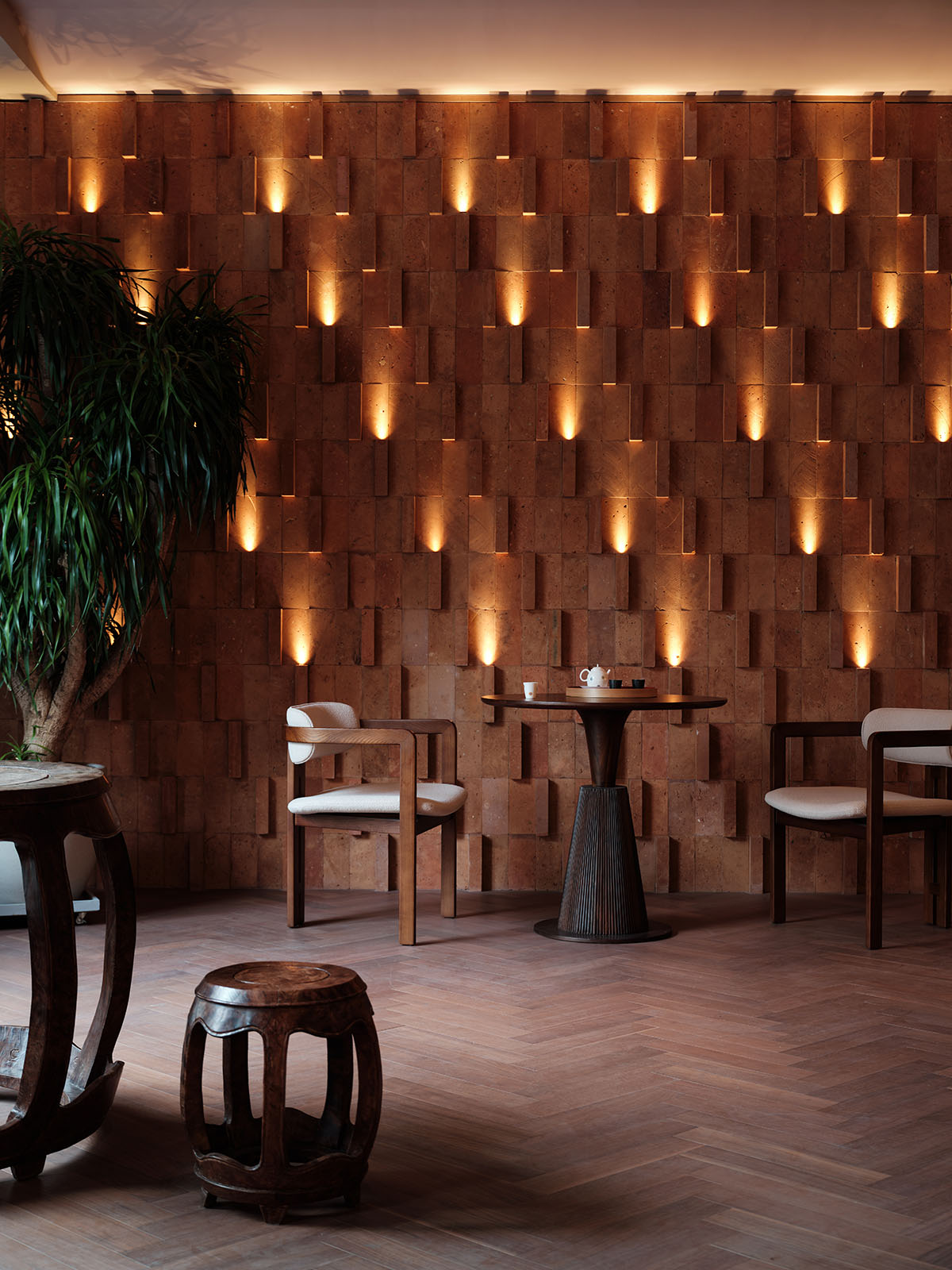
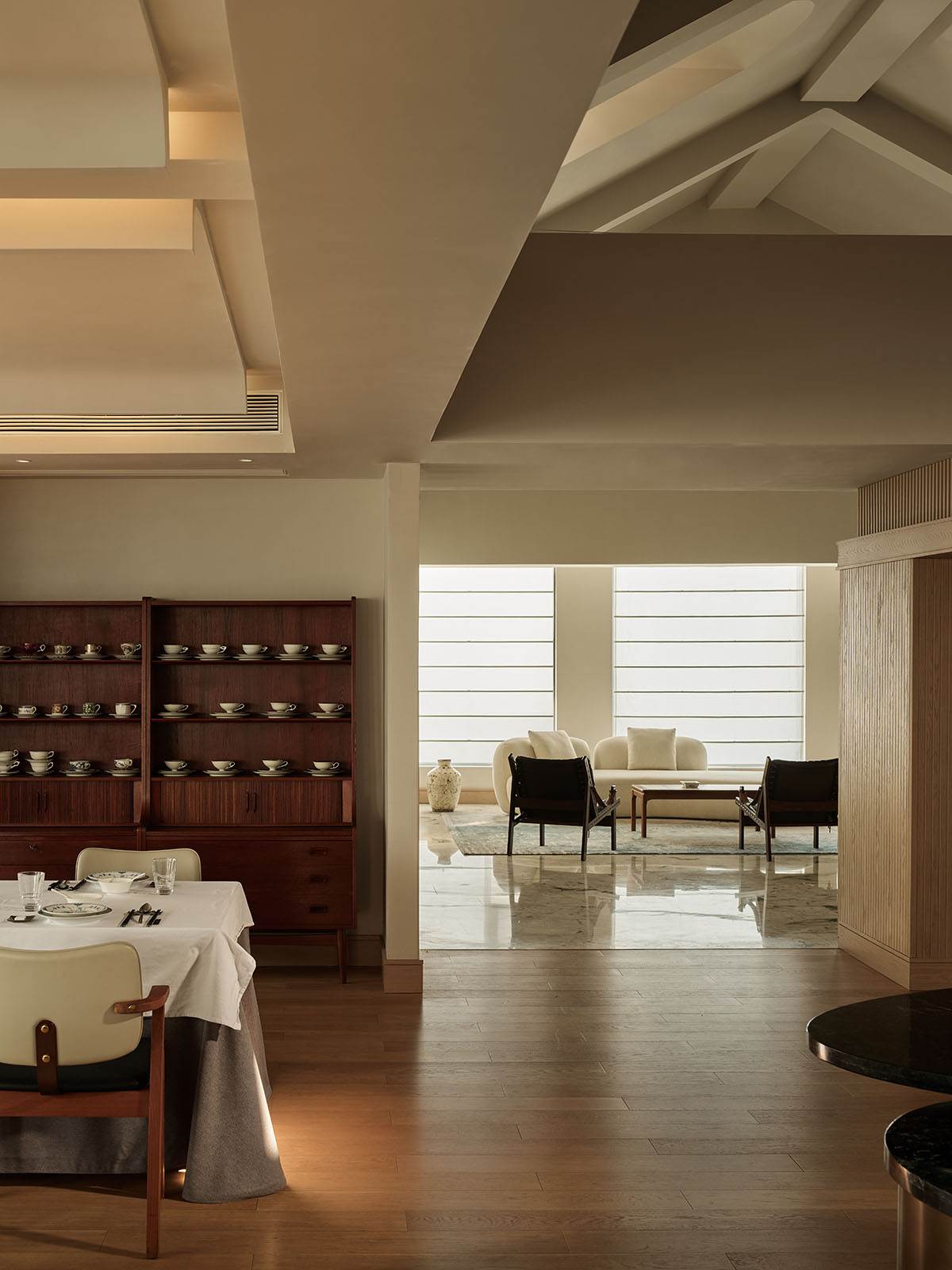
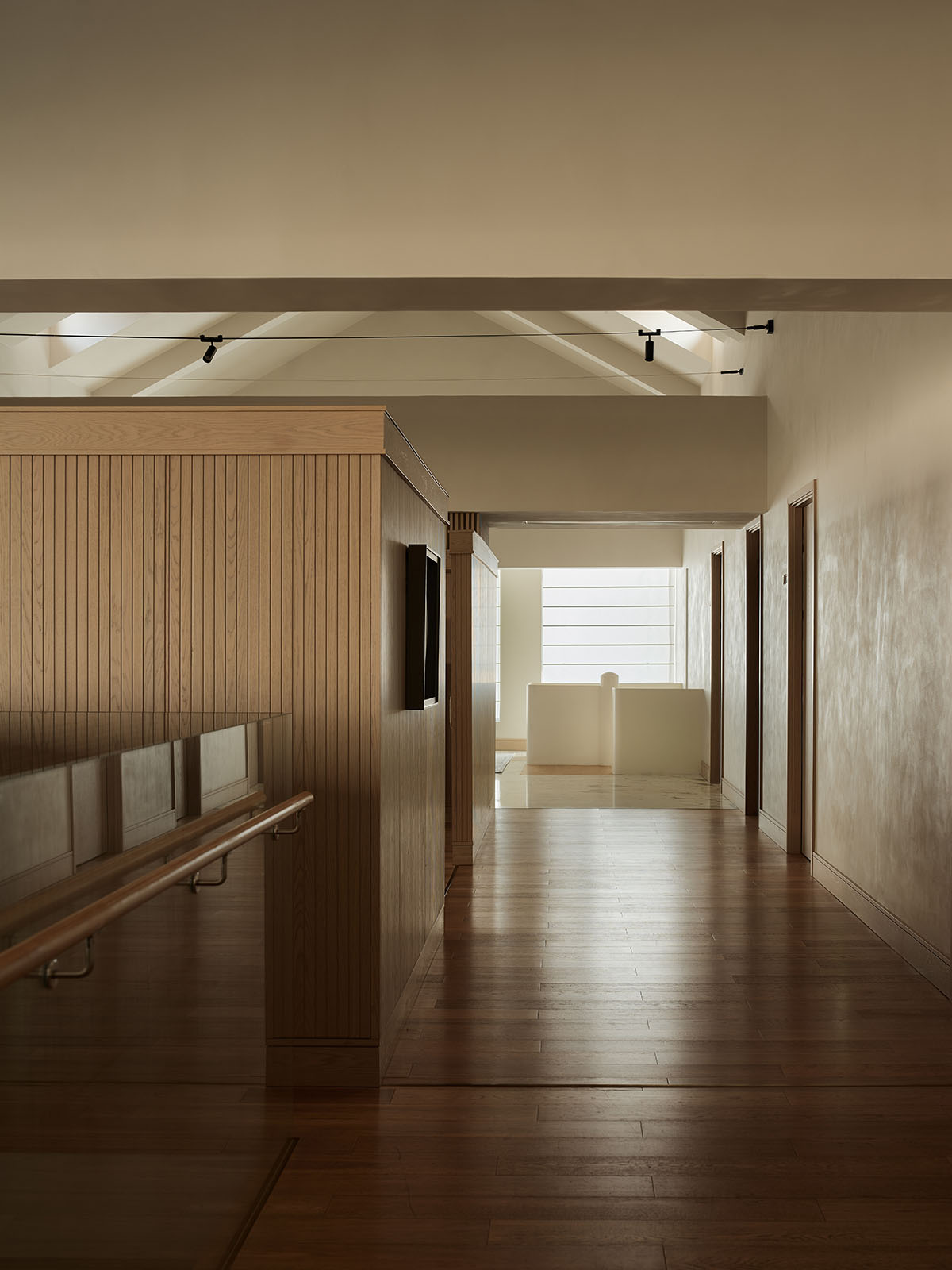
The original building, reminiscent of a factory or office block, featured vast floor plates, constrained ceiling heights, and an oppressive atmosphere. The designer’s primary challenge was to reconfigure and repurpose the existing structure. By connecting sections of the first and second floors, and the sixth and seventh, the designer created shared spaces. On the first floor, wooden lattices extend from the foyer, climbing the walls towards the second level. A spiral staircase ascends from the sixth floor to the seventh-floor garden, while picture rails adorn the walls of the upper levels, allowing for future art exhibitions. This approach not only liberated the ceiling heights but also fostered continuity and a visual dialogue between floors. Furthermore, the designer unlocked the potential of the formerly enclosed roof space, filling it with natural light, and evoking the serene atmosphere of a cathedral – a design choice that allows for unobstructed vertical sightlines and improved airflow. The project successfully revitalizes a dormant building, allowing it to breathe and awaken.
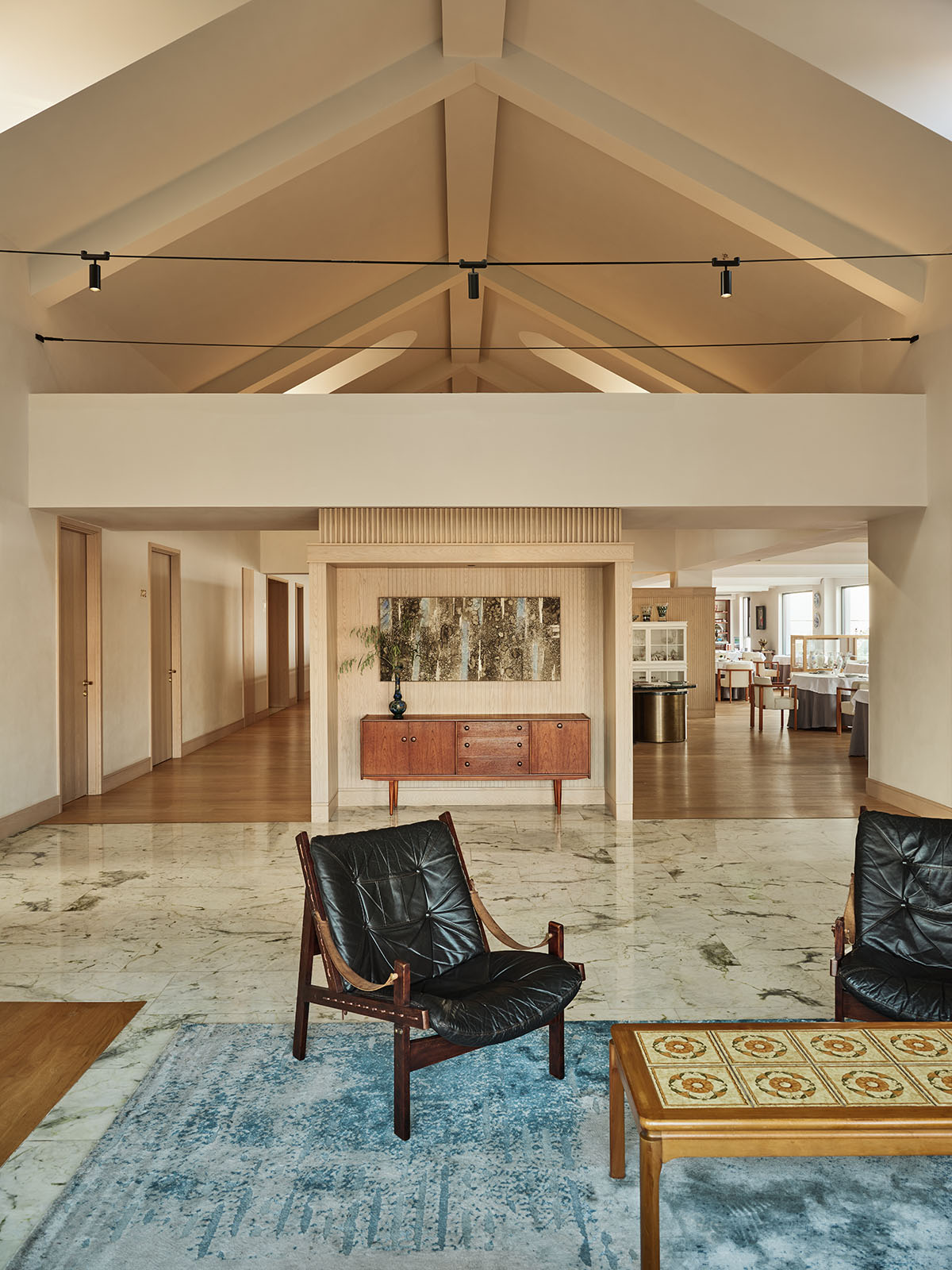
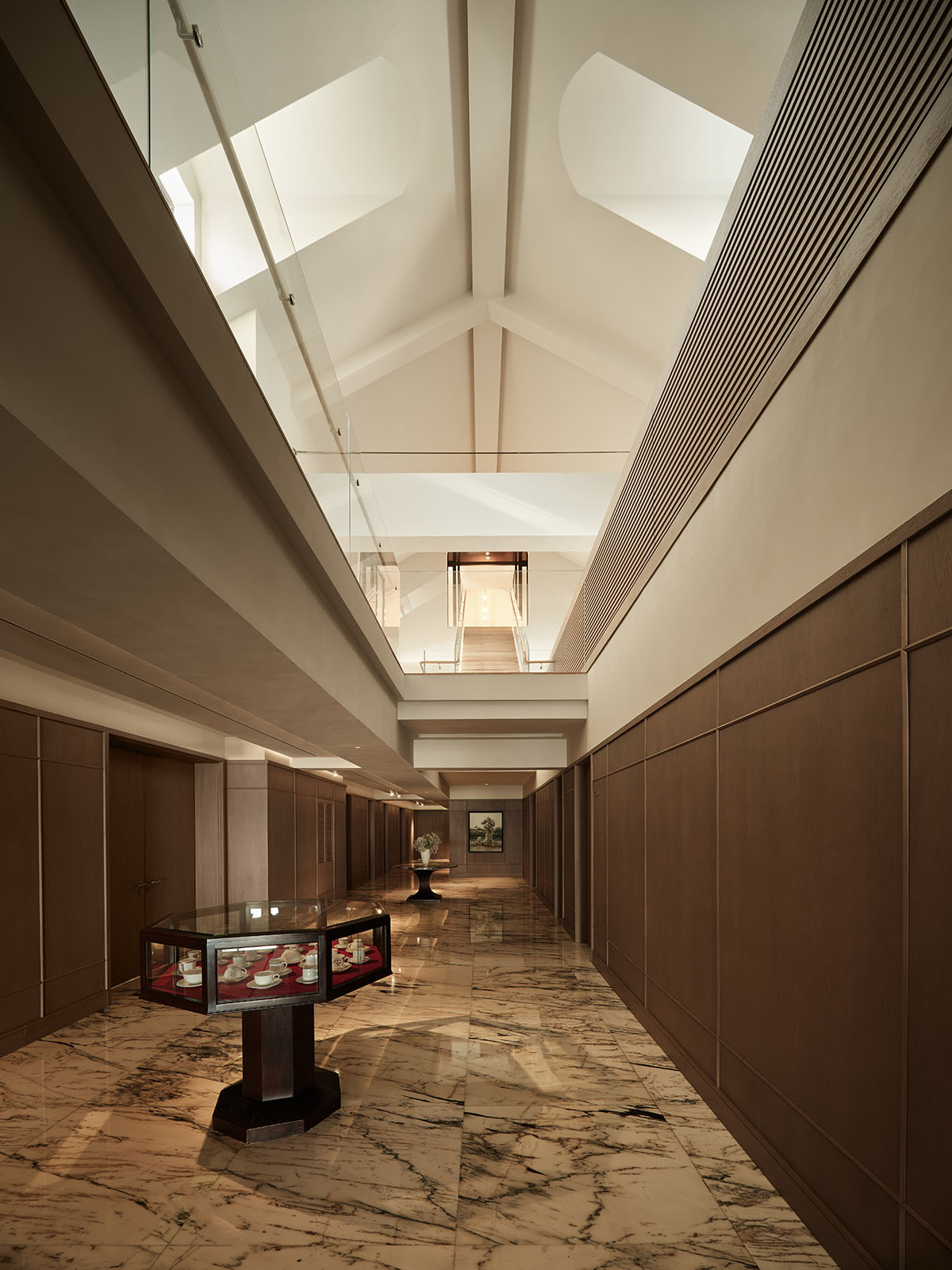
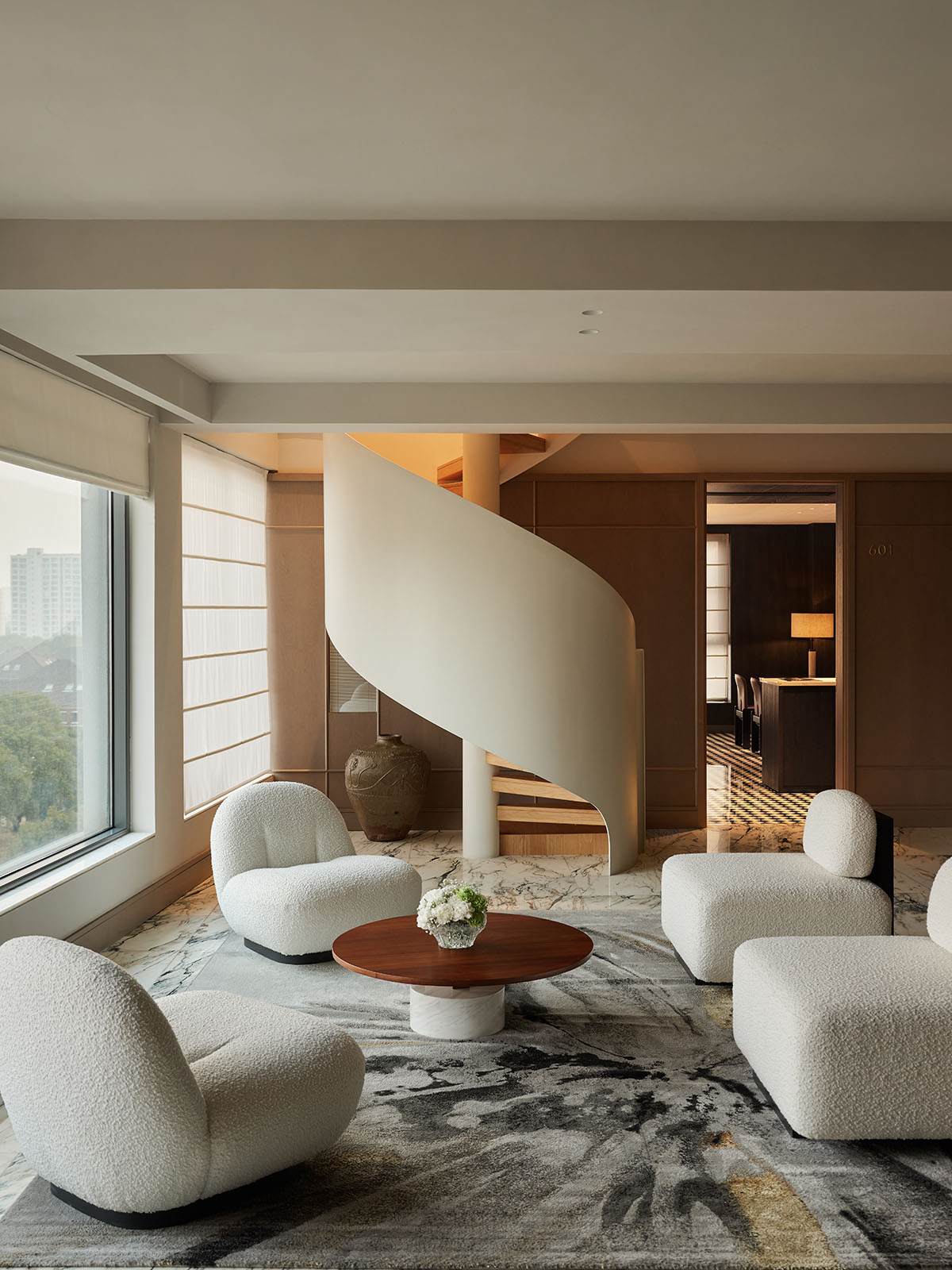
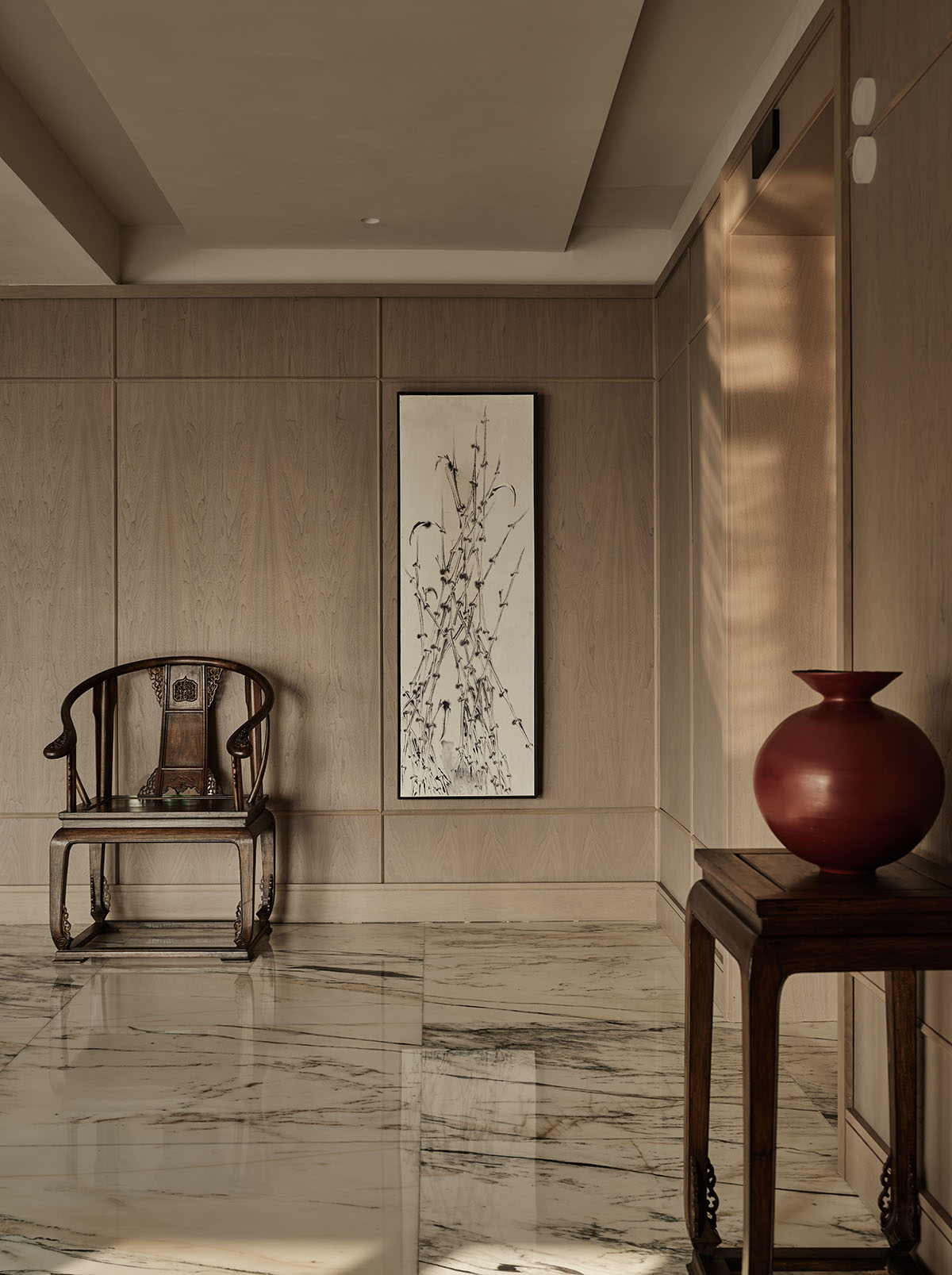
The reconfiguration of the space’s function is even more transformative. Traditional restaurants prioritize maximizing revenue, often placing the main dining hall on the ground floor to attract foot traffic and locating private rooms on upper levels to cater to high-end clientele seeking privacy and tranquility. In this project, the designer subverts this convention by situating the main dining hall, a communal space, on the seventh floor, the building’s top level. The rooftop attic has also been opened up for dining gatherings and art salons—guided by an egalitarian design philosophy, the designer openly shares the more scenic and expansive space with a wider audience. Private rooms of various sizes are distributed across all floors. The ground floor features a tea-brewing area and tasting area for self-guided experiences. Complementing this, each private room throughout the building offers a tea setting. In the graceful process of brewing and infusing tea, minds cease their restless wandering and find a sense of peace and presence. This approach, guiding guests to slow down their pace and cultivate inner calm, stands in stark contrast to the rapid table turnover model typically pursued by traditional restaurants.
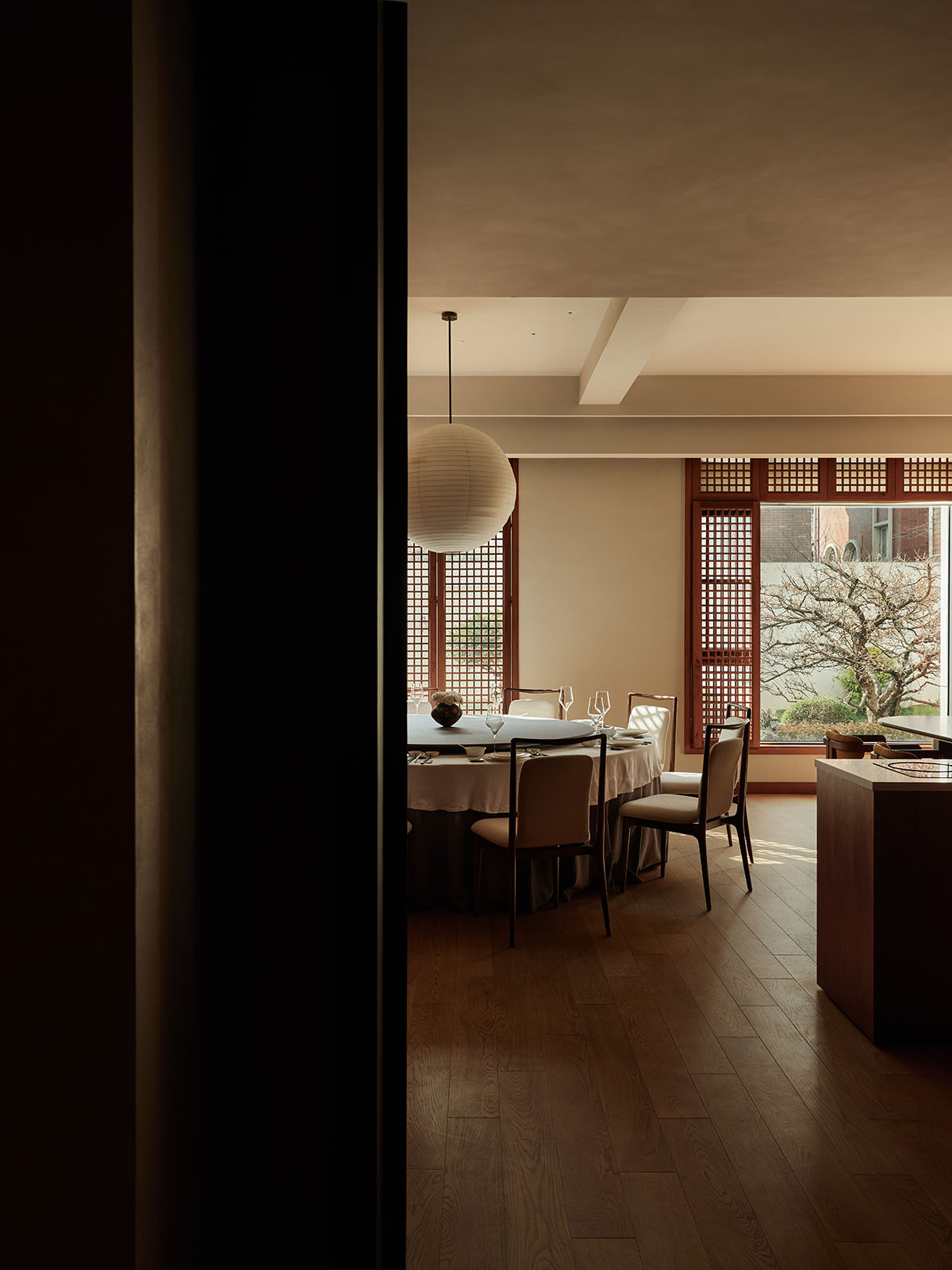

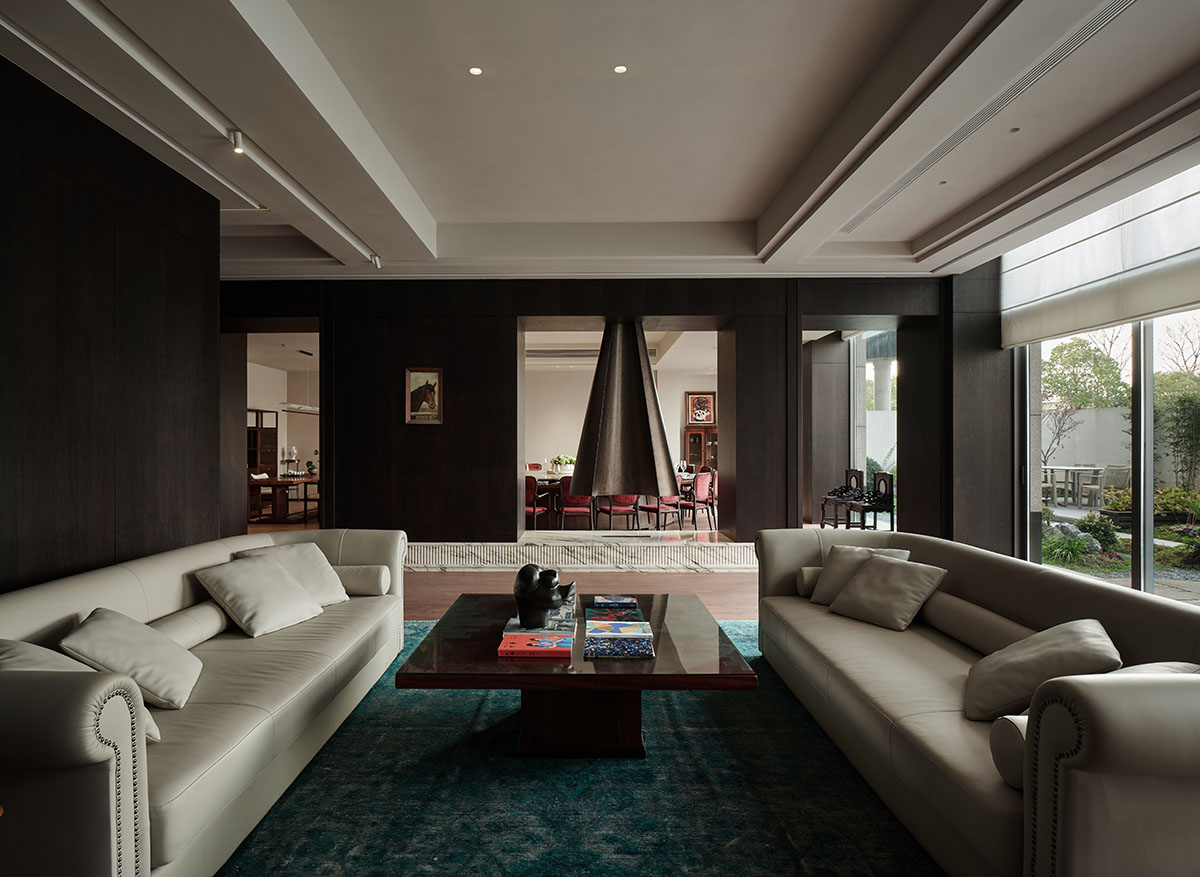
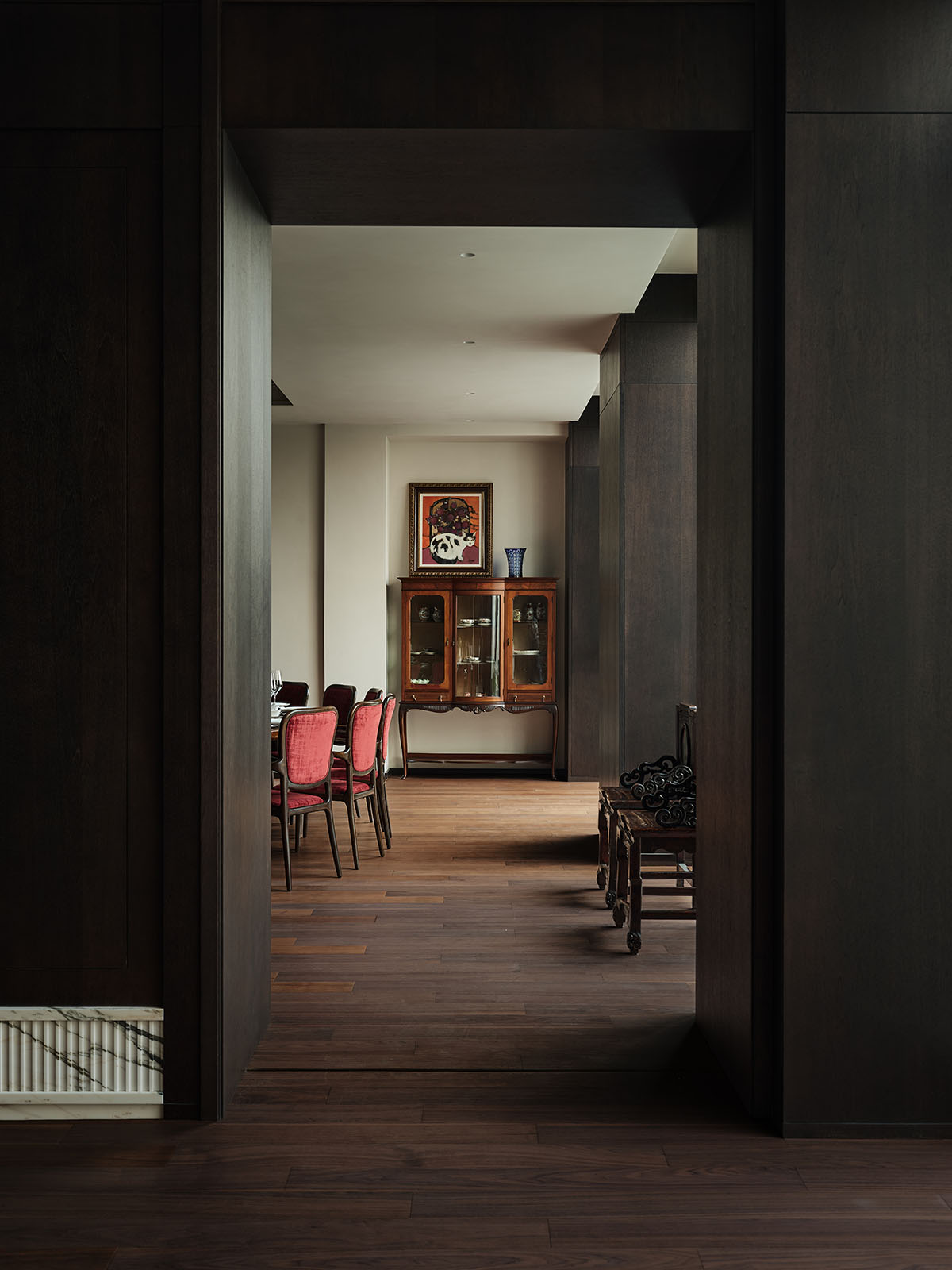
The designer believes that a good restaurant offers more than just delicious food; it leaves a lasting impression long after the meal. From the outset, the designer and the restaurant owner agreed to present guests with their shared vision of a home-style dining experience. In contrast to the homogeneity often found in traditional restaurants, each private room at Jiu Yue is unique. The owner generously shared antique furniture, porcelain, and artworks collected around the world, while the designer treated the space as a fertile experimental ground to showcase diverse dining scenarios and atmospheres, thoughtfully integrating the owner’s cherished items. Allowing them to be used and experienced rather than simply admired, this approach brings authentic experiences to life.
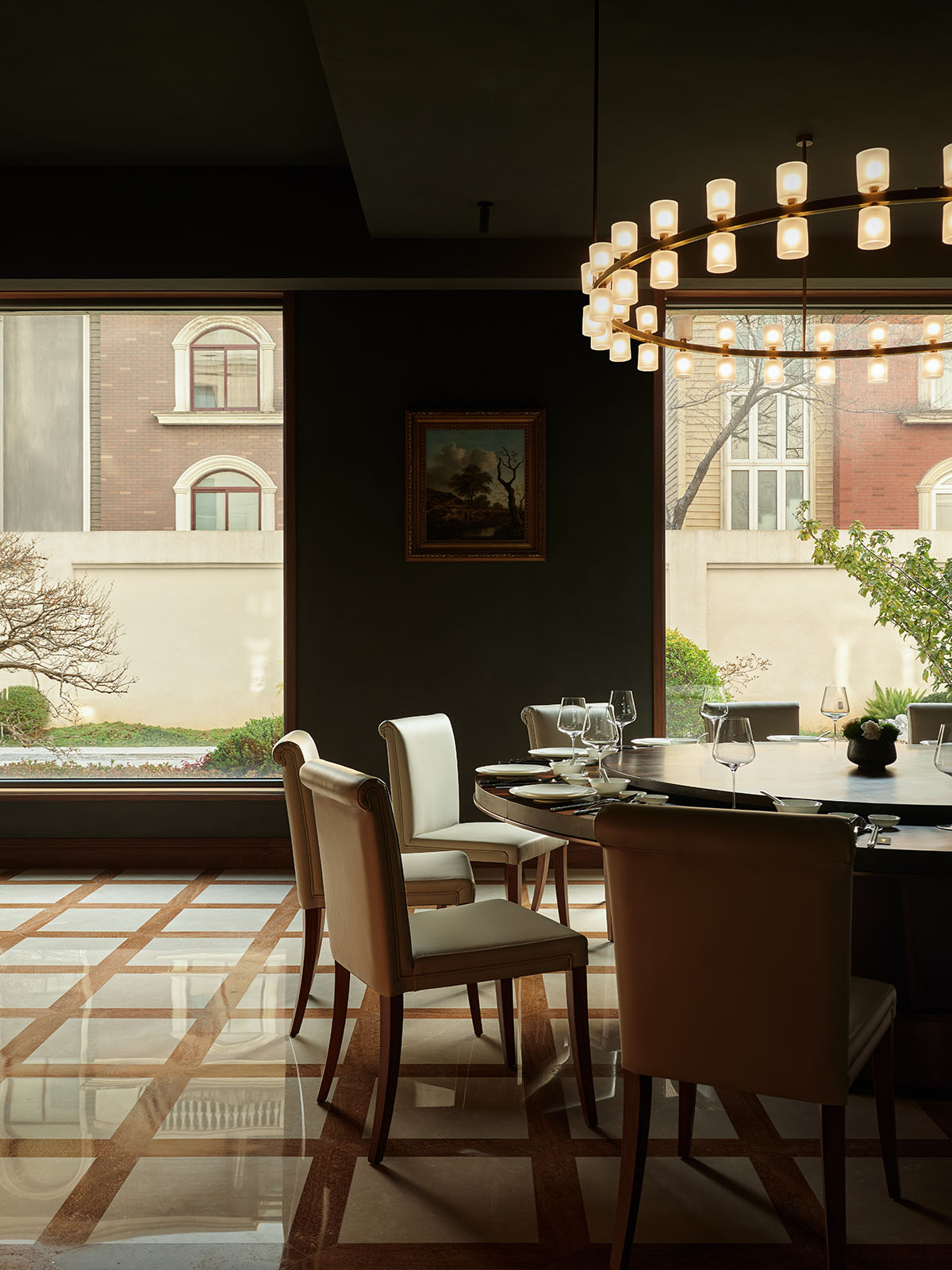
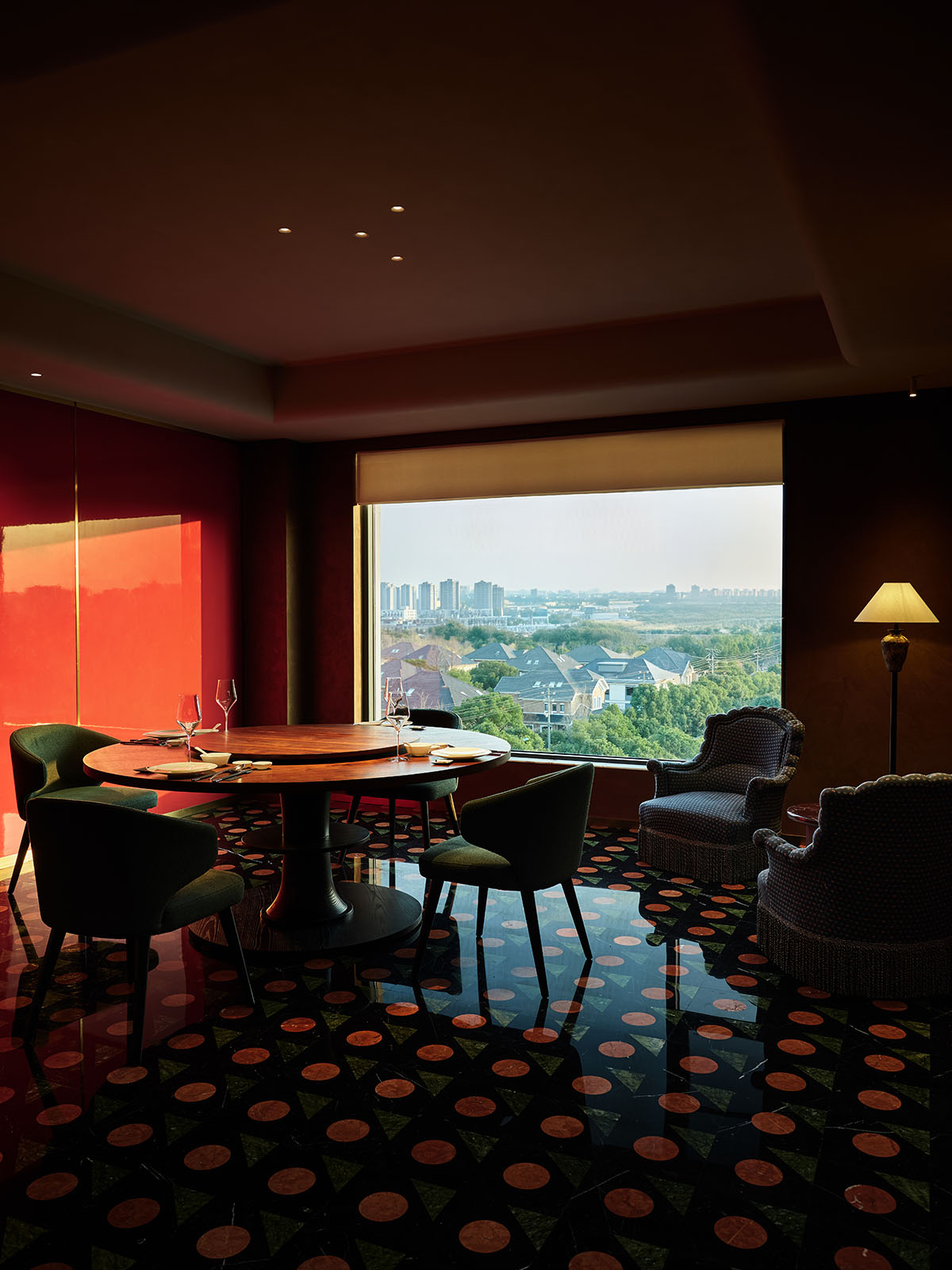
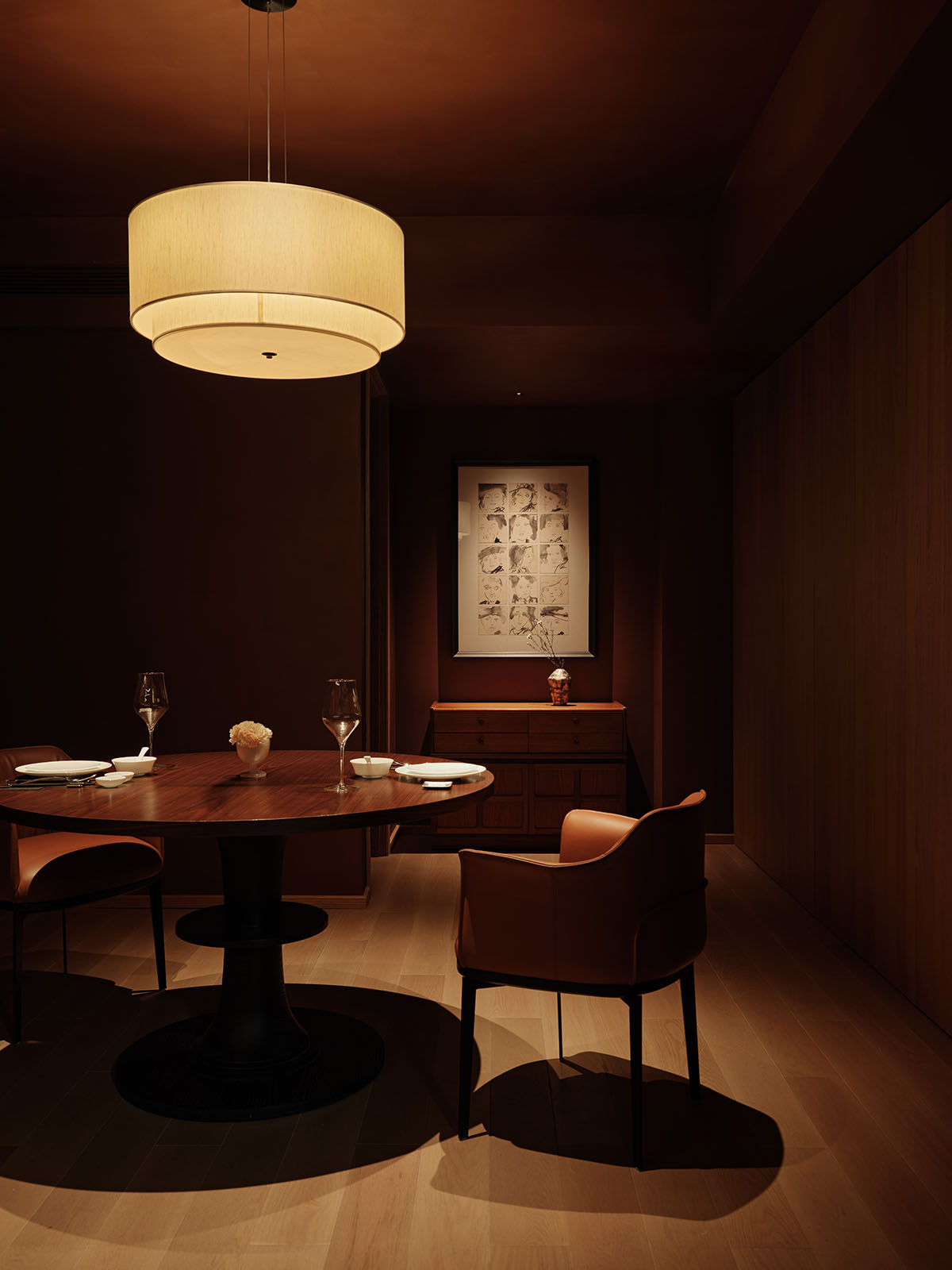
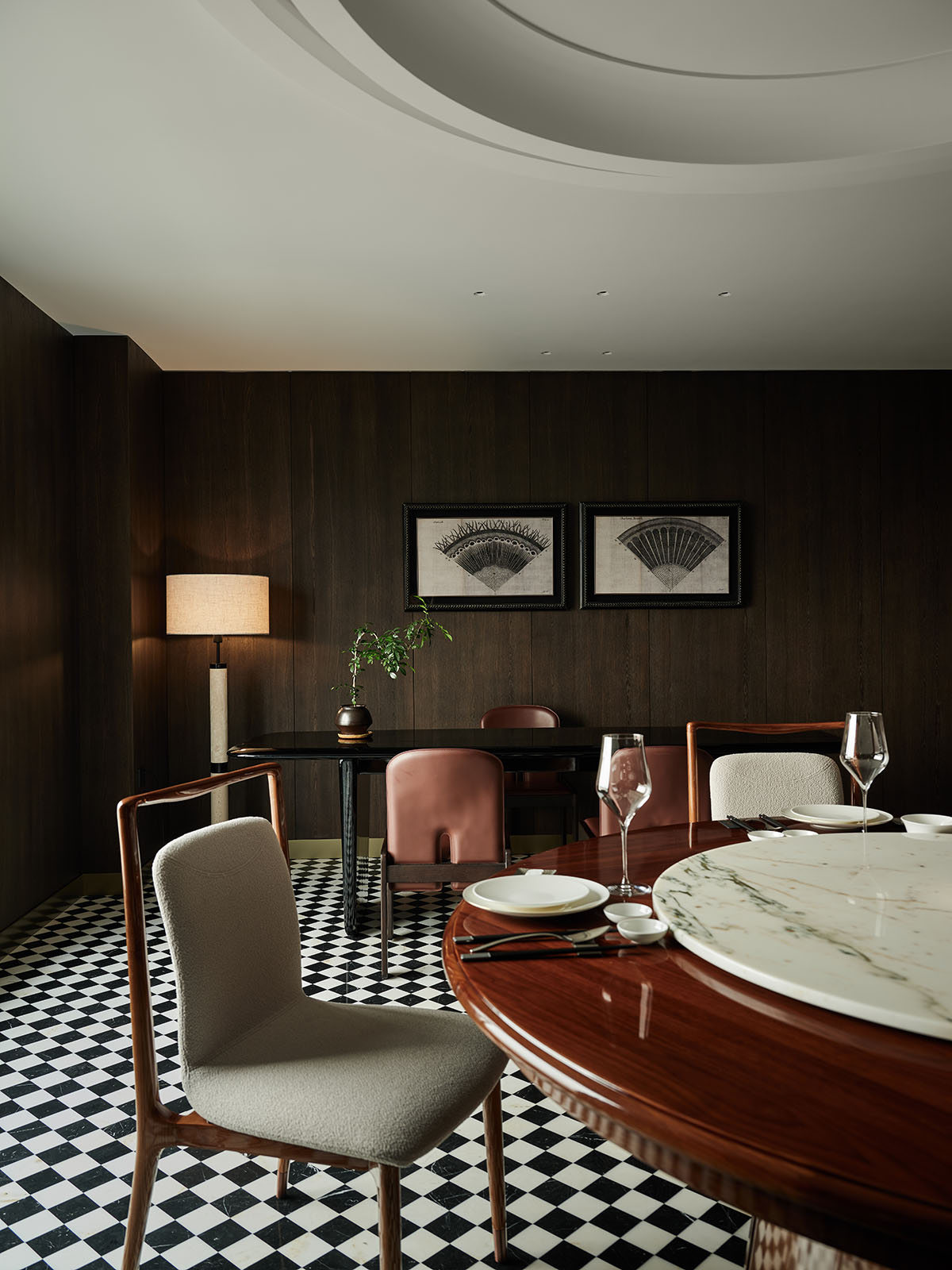
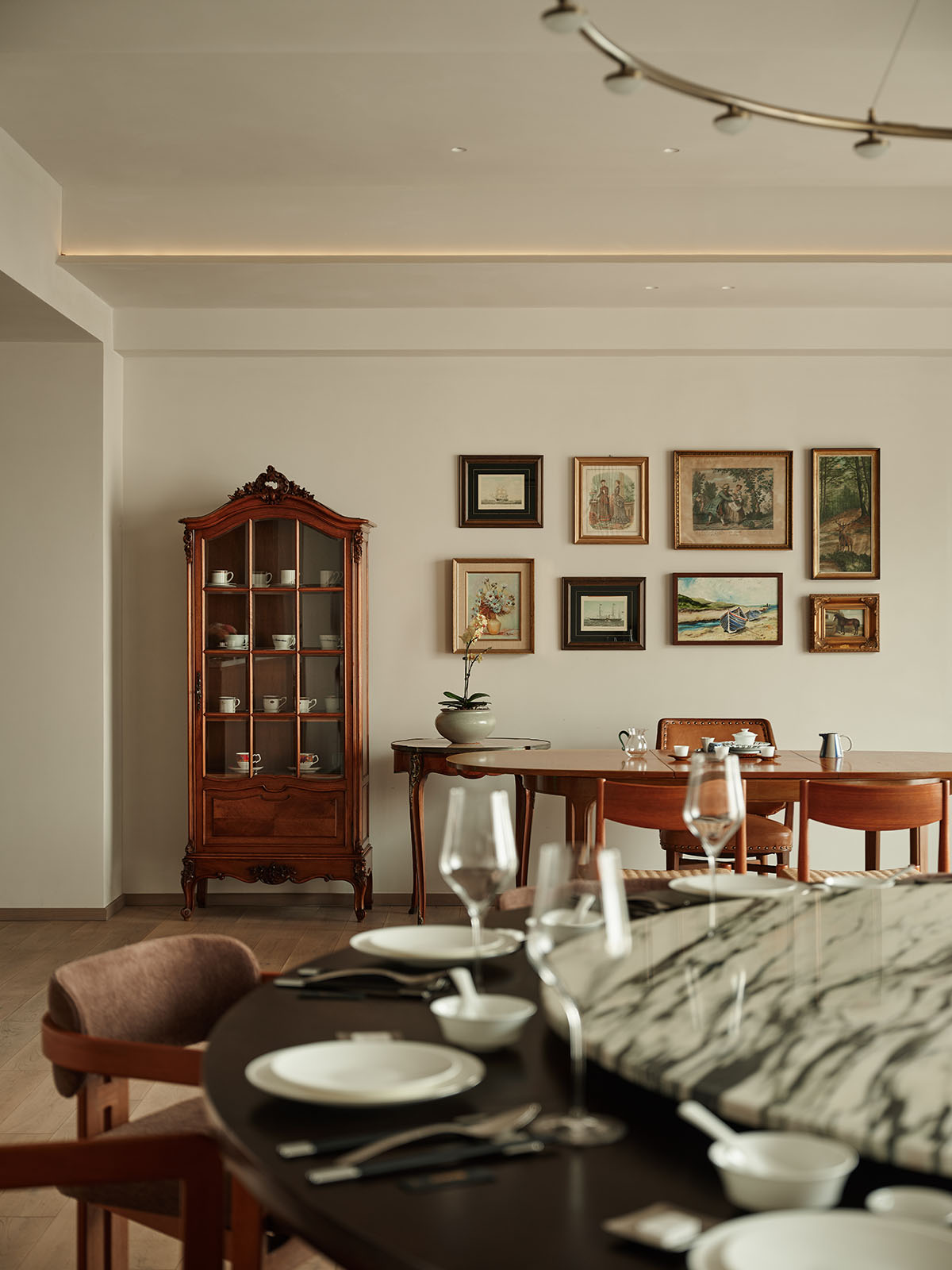
In the largest private room on the first floor, a pair of antique Oriental chairs with hand-painted art screens on their backs, like women who have retained an exquisite charm despite weathering the vicissitudes of life, sit regally, ready to impart long-sealed stories. In a small, warm-lit private room, couples can enjoy undisturbed dinners. In another room, the collision of a red lacquered wall, as passionate as flamenco, and a hand-pieced polka-dot marble floor seemingly invites guests into a film directed by Wong Kar-wai or Woody Allen… Warm, comforting, and uniquely styled, these private rooms inspire a sense of curiosity, encouraging exploration. Returning home, visitors may feel inspired to refresh their own dining spaces—a shared aspiration of both the designer and the owner.
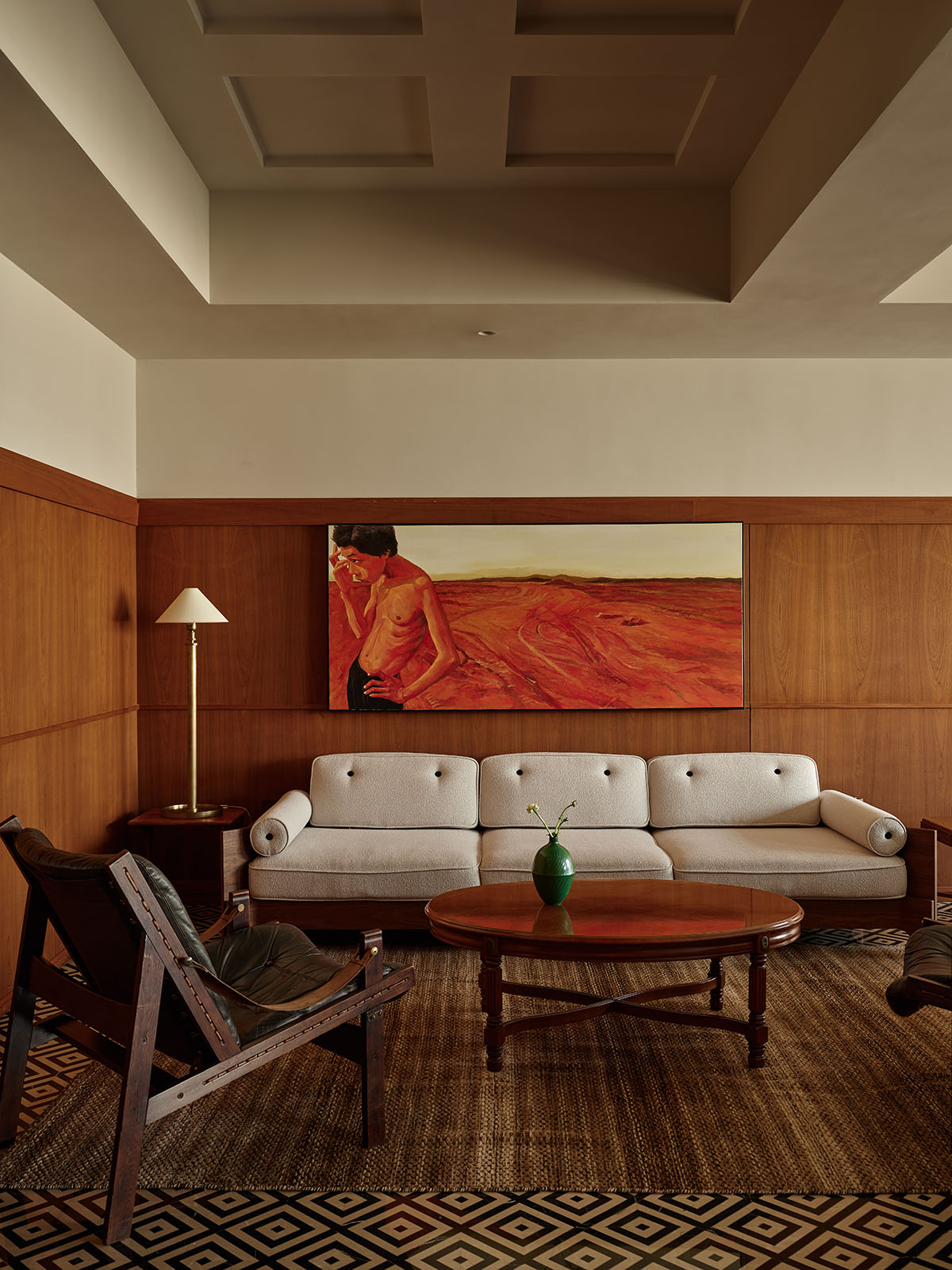
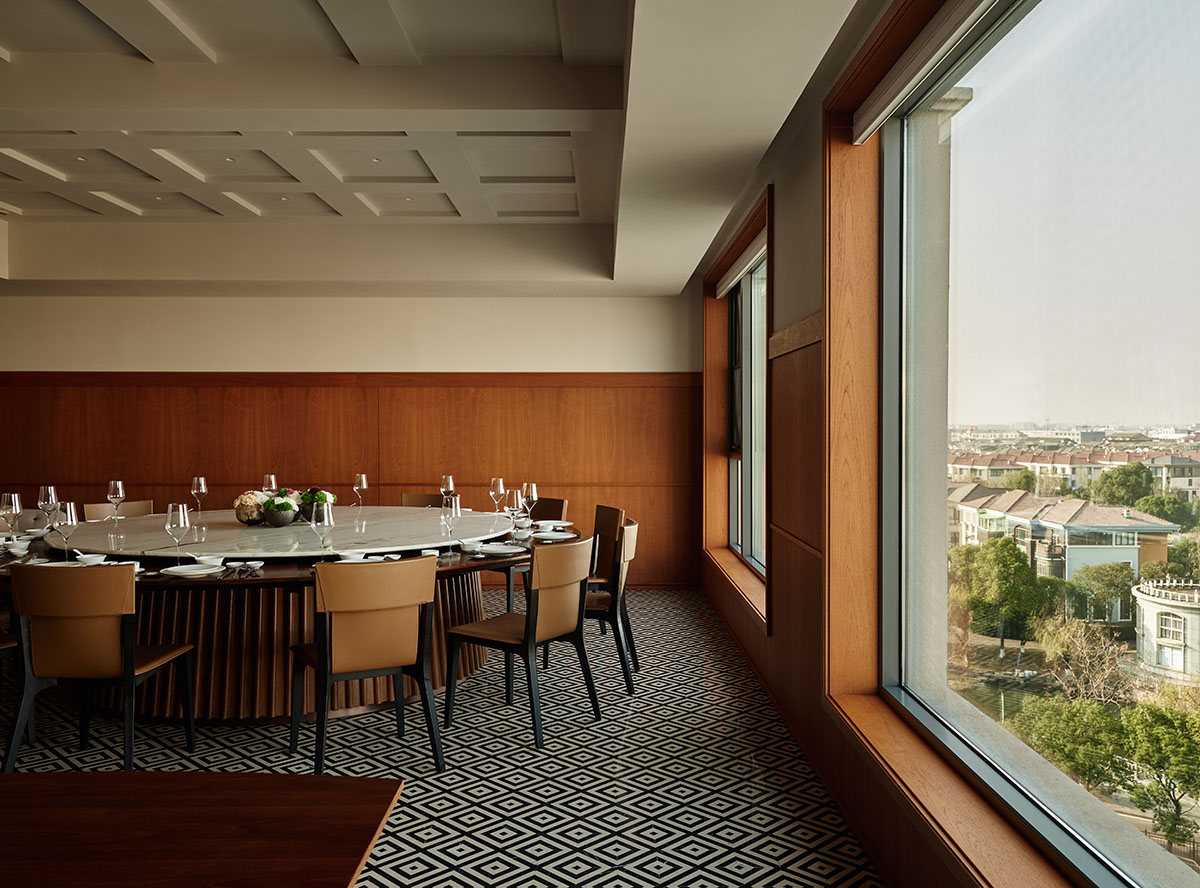
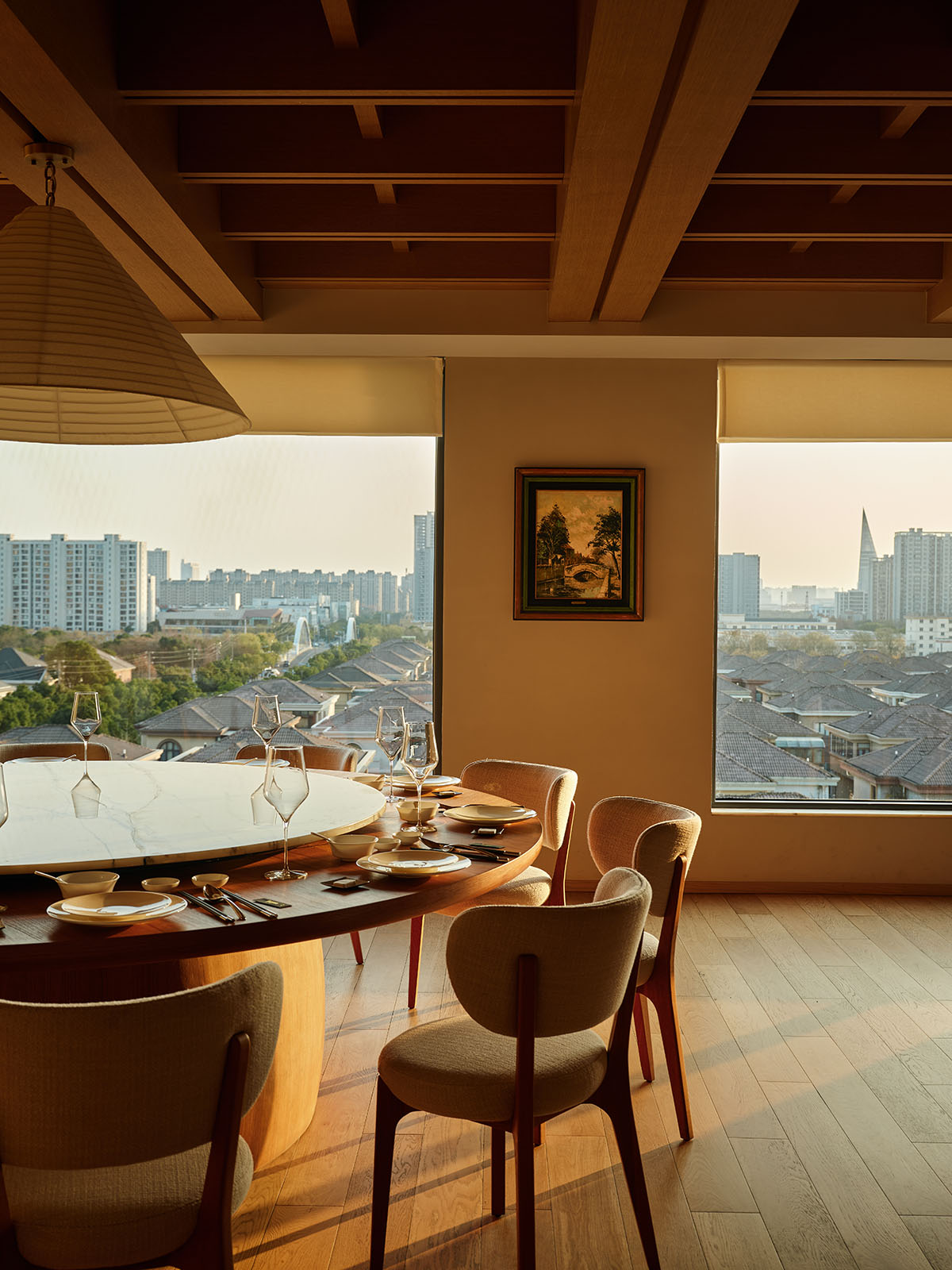
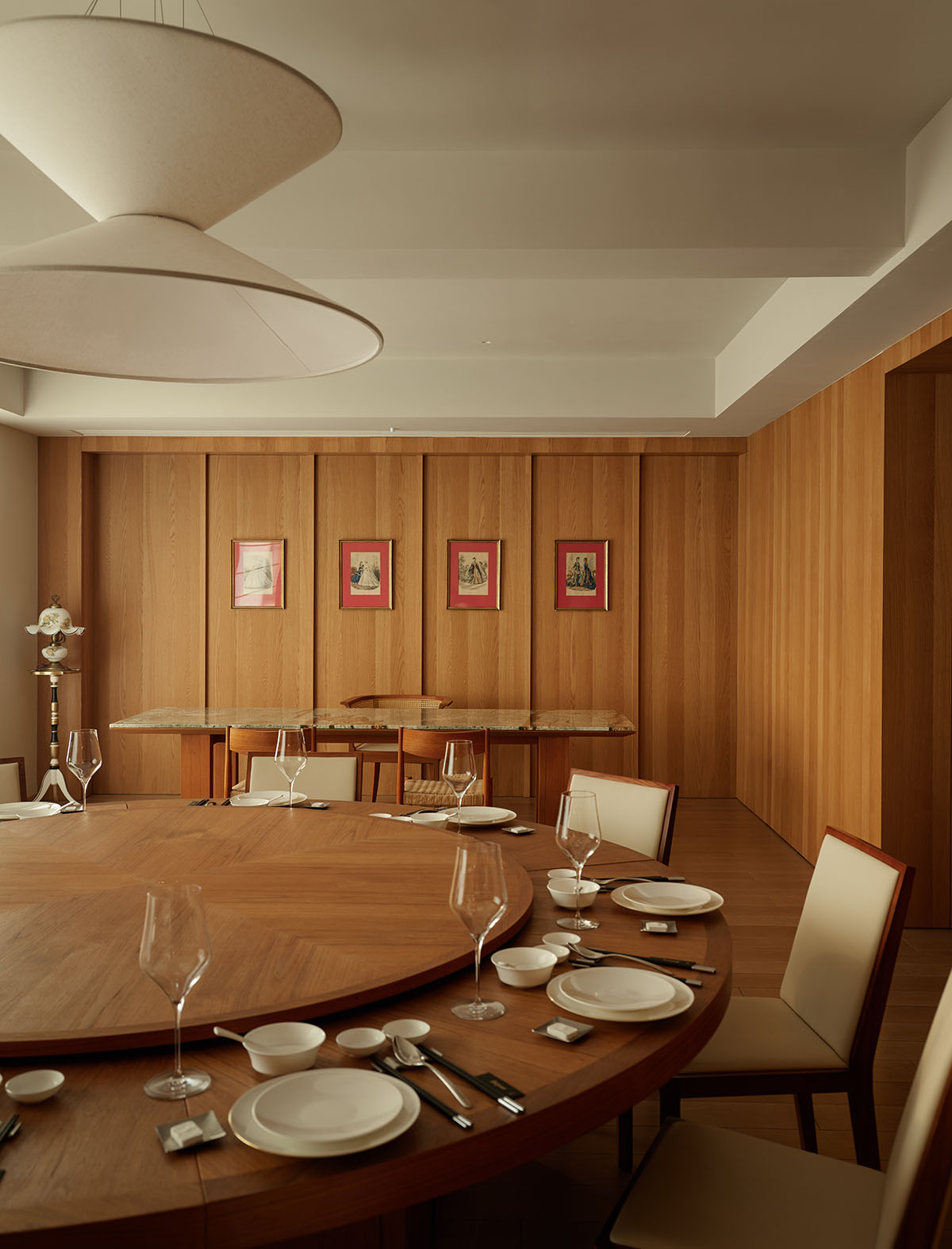
The spatial details are equally noteworthy, akin to a refreshing garnish on a plate, offering surprise and a sense of thoughtful attention. In the ordering area on the first floor, the ingredients are meticulously displayed on a vintage billiard table, making the ordering process more engaging. The door handle of the ground floor entrance, hammered by hand on an aluminum surface, embodies reverence for craftsmanship and the beauty of time. The walls of the tea-tasting area are constructed of stacked terracotta bricks, embedding light sources that evoke rich layers of light and shadow. Thanks to pre-design research and site analysis, the designer installed lattices in the private room adjacent to the outdoor garden, allowing light to grace the walls at just the right angle, imbuing the space with tranquil Zen. The women’s restroom on the first floor also features an elegant powder room. These details are designed to gently draw people away from the inertia of anxiety, encouraging them to enjoy moments of leisure and tranquility.
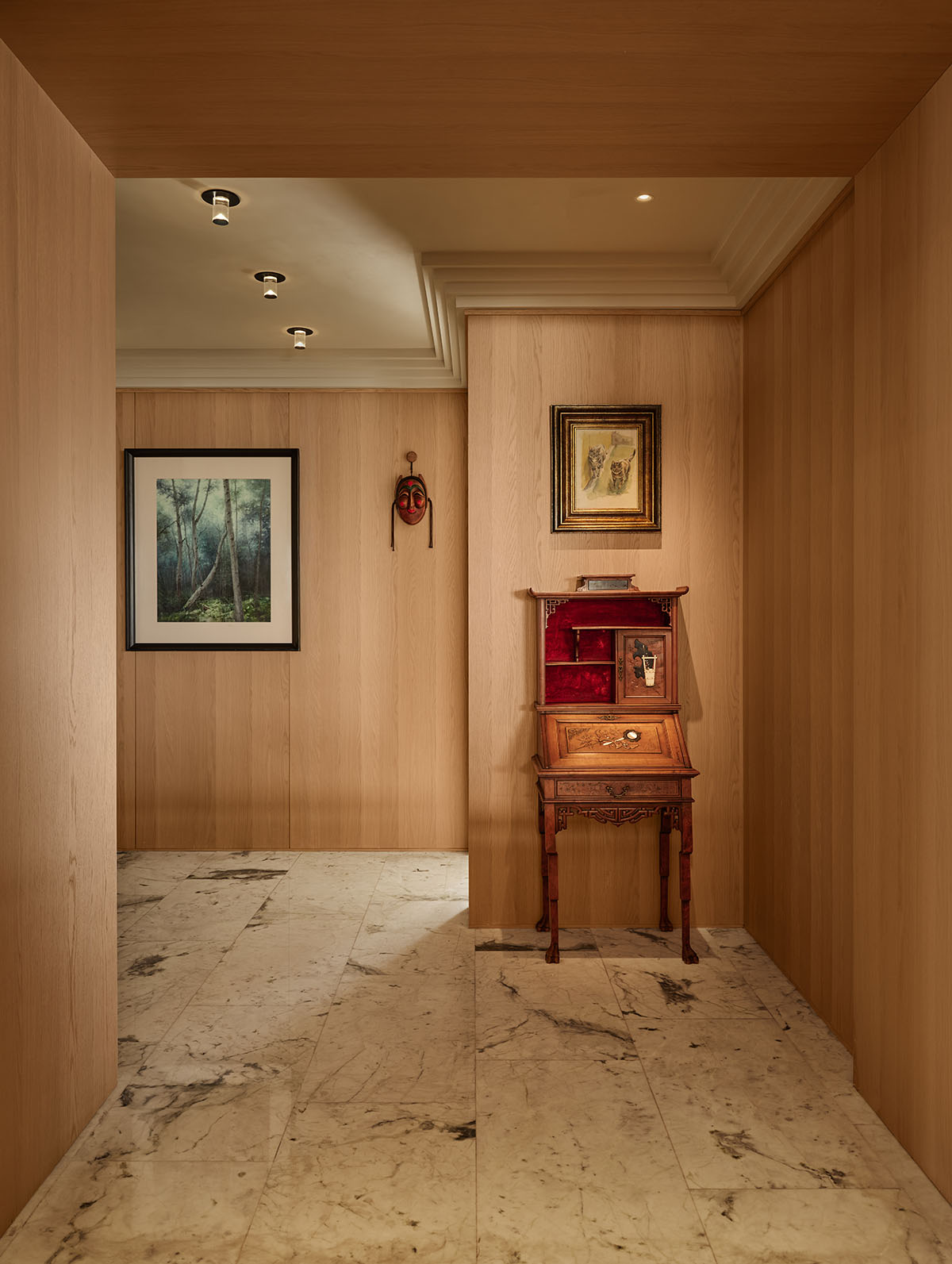
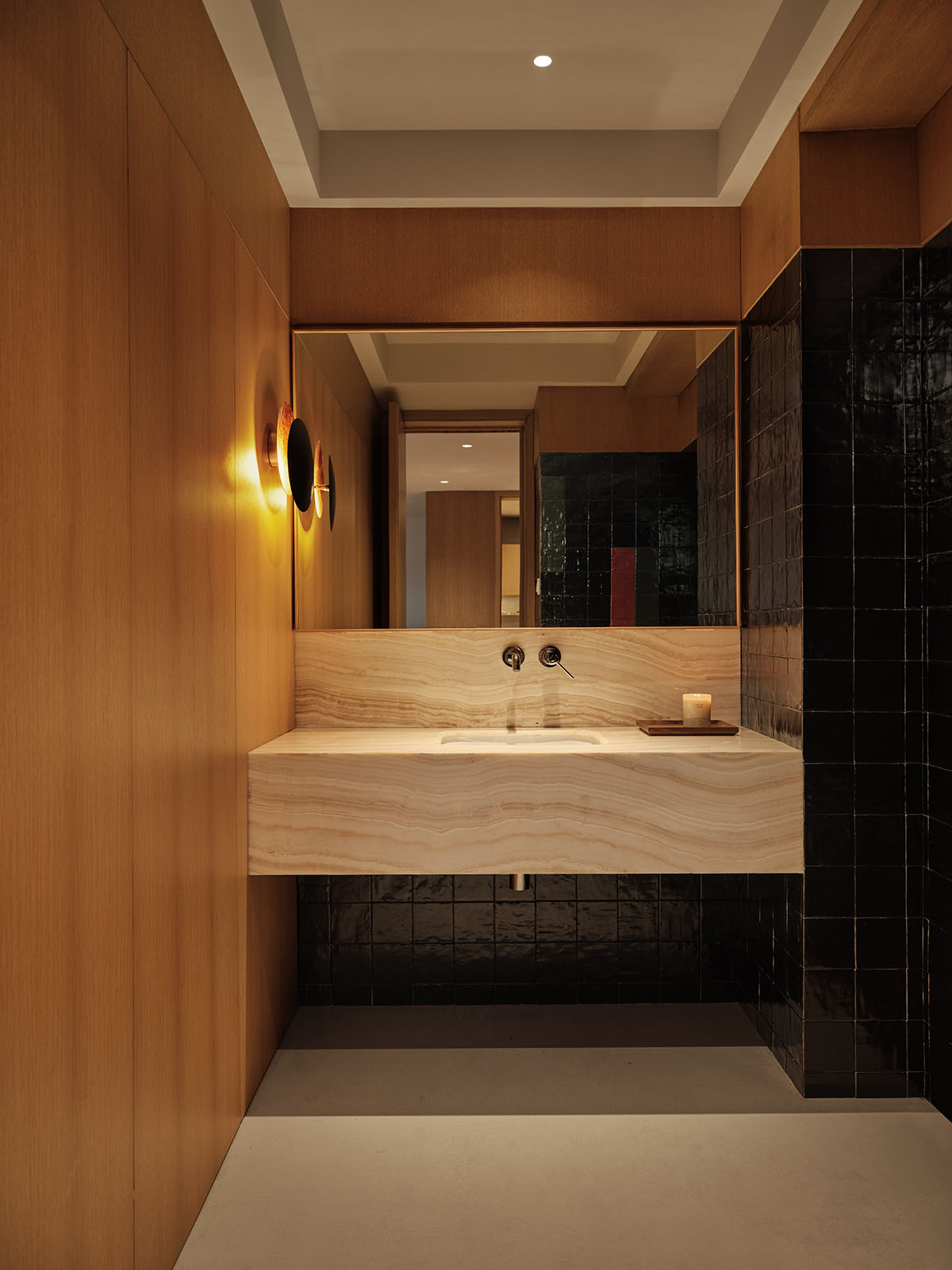
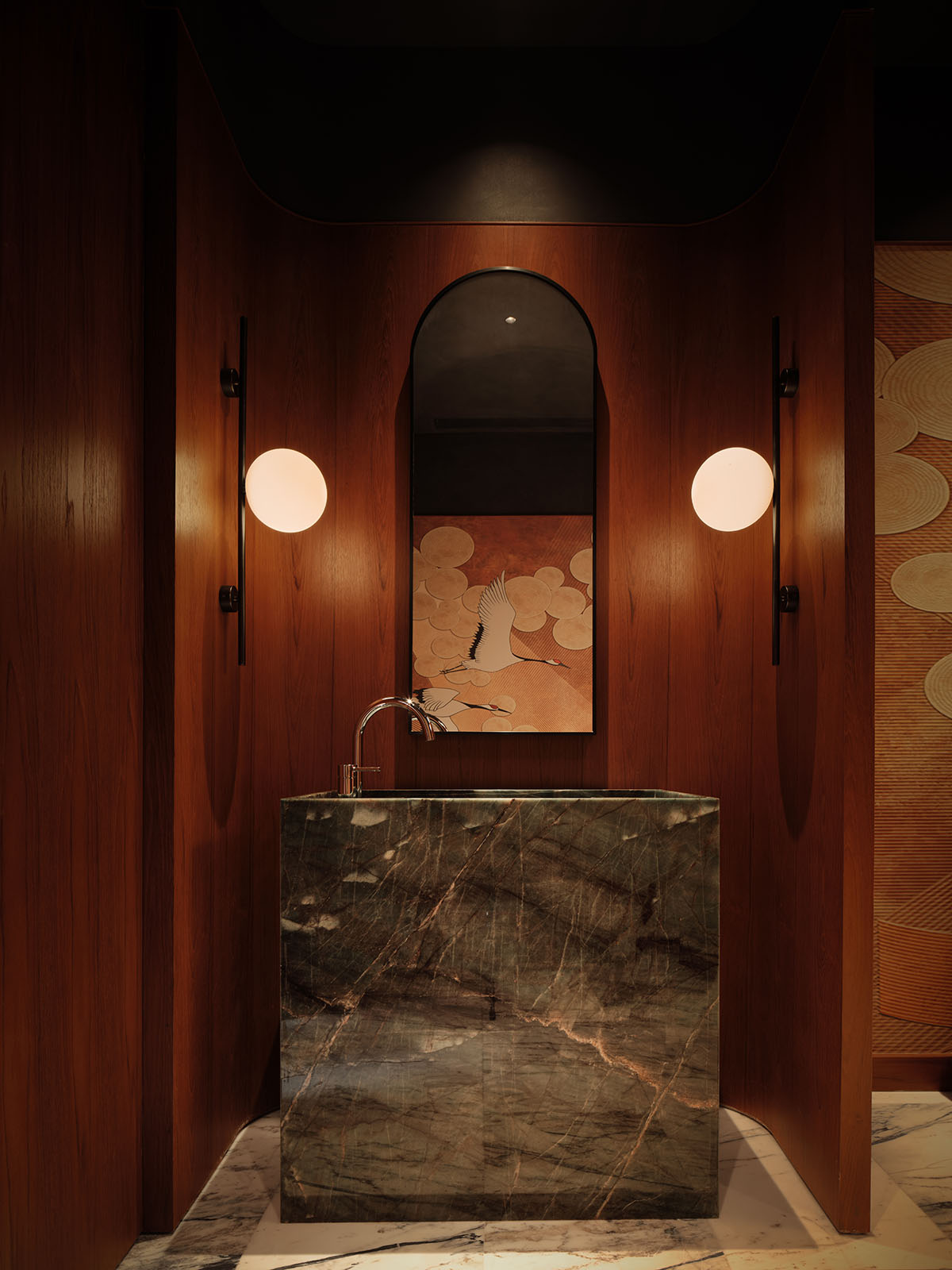
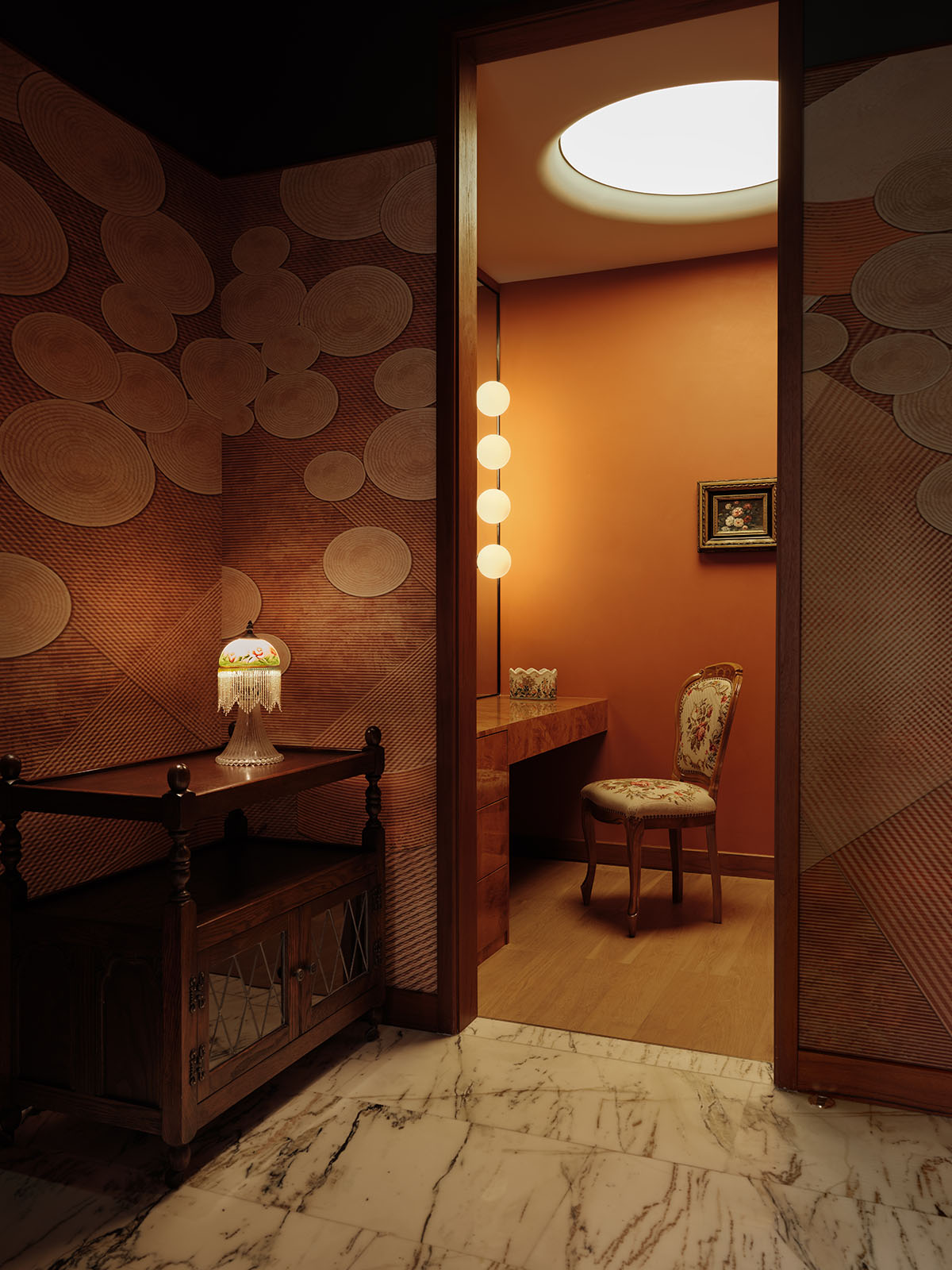
In a bygone era of limited information, people would visit newly opened restaurants or hotels to experience the design firsthand, imagining how to replicate it in their own homes. In the digital age, easy and rapid access to information has dulled our perception of real-life experiences. Jiu Yue pulls people from the illusory online realm back to tangible reality, where an old building awakens, hearts find solace, and people can linger, savoring the flavors of the food and the ambiance, and appreciating the preciousness and sincerity of human connection. Behind the simple act of enjoying a good meal lies a deliberate rediscovery of authentic human sensation.
